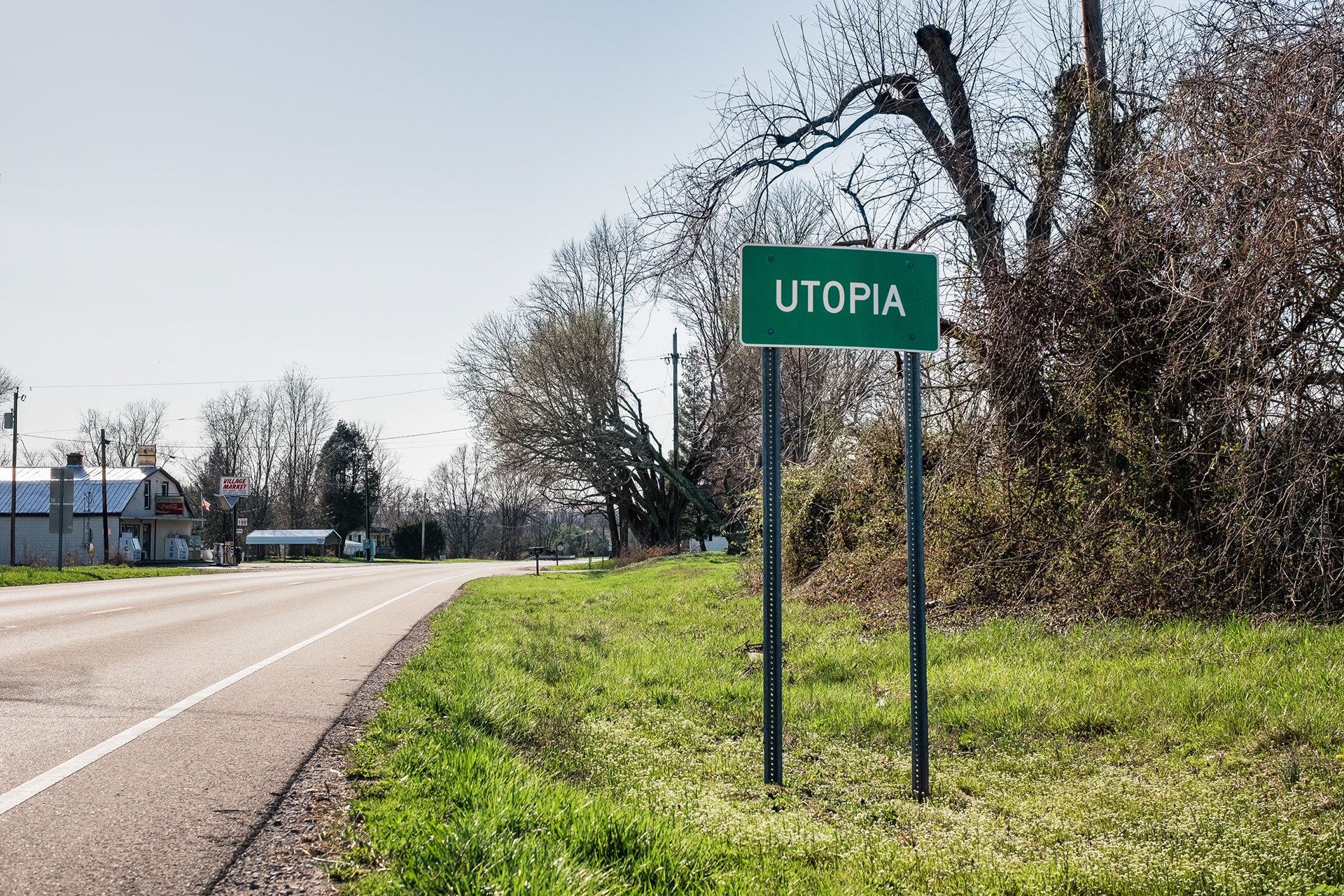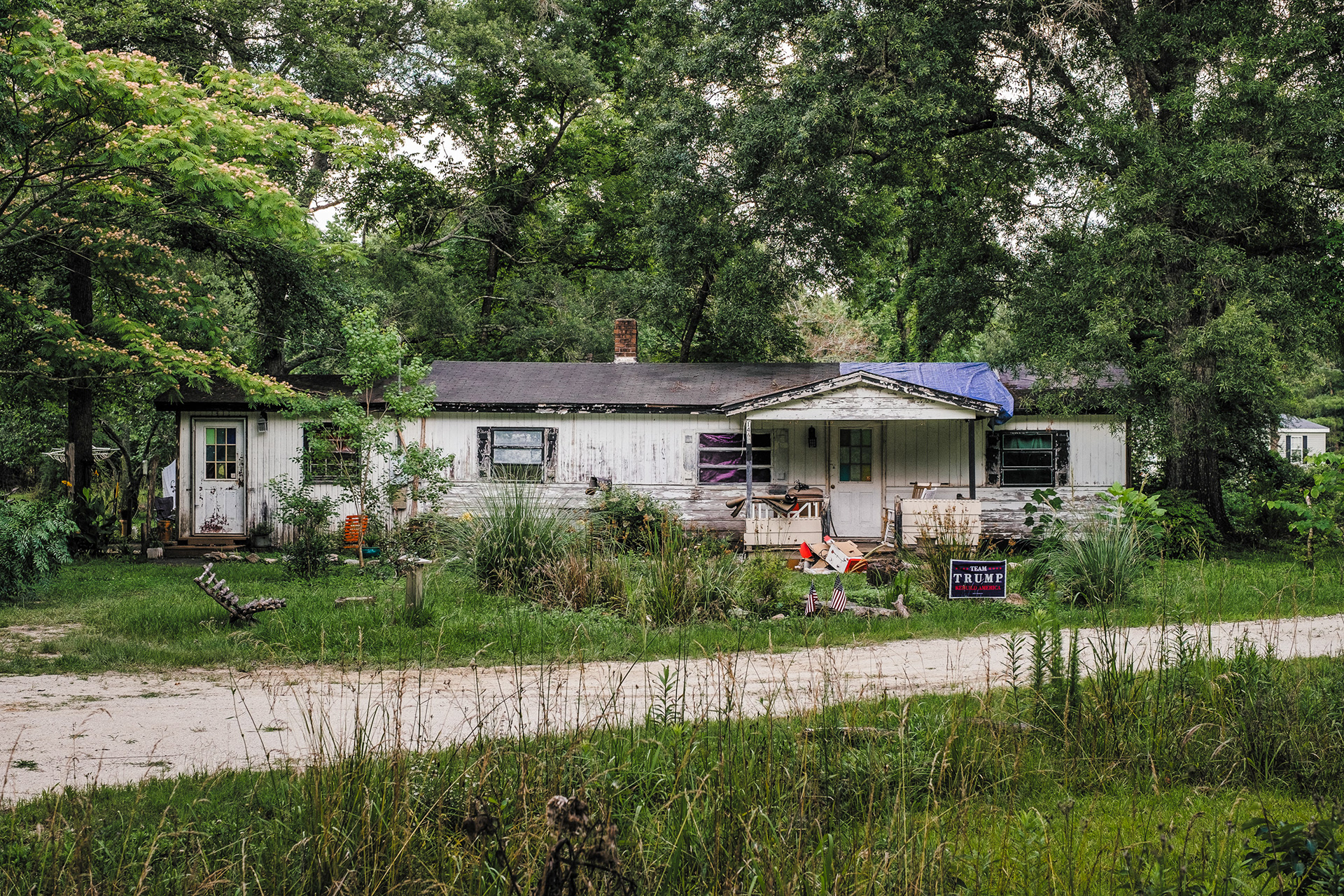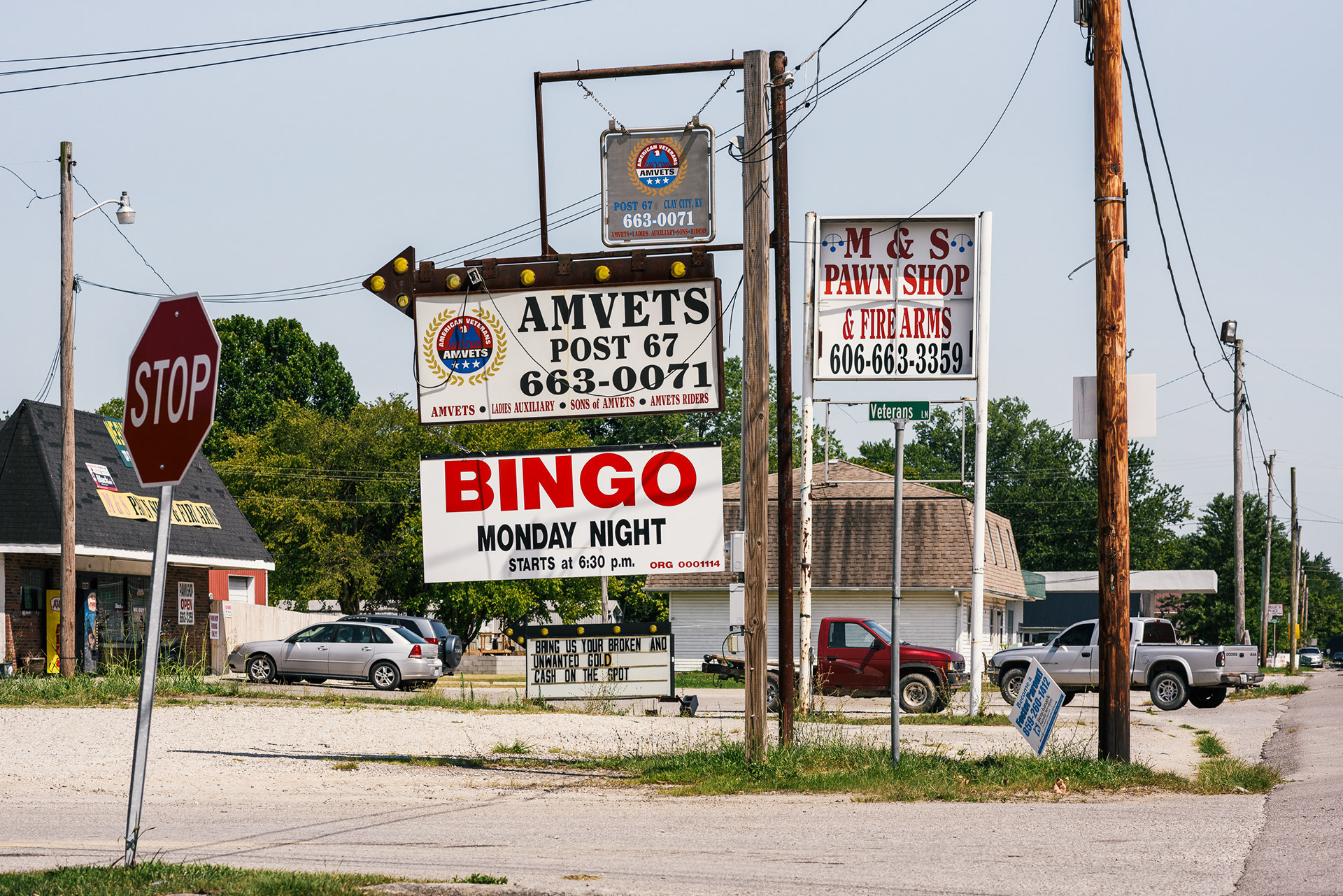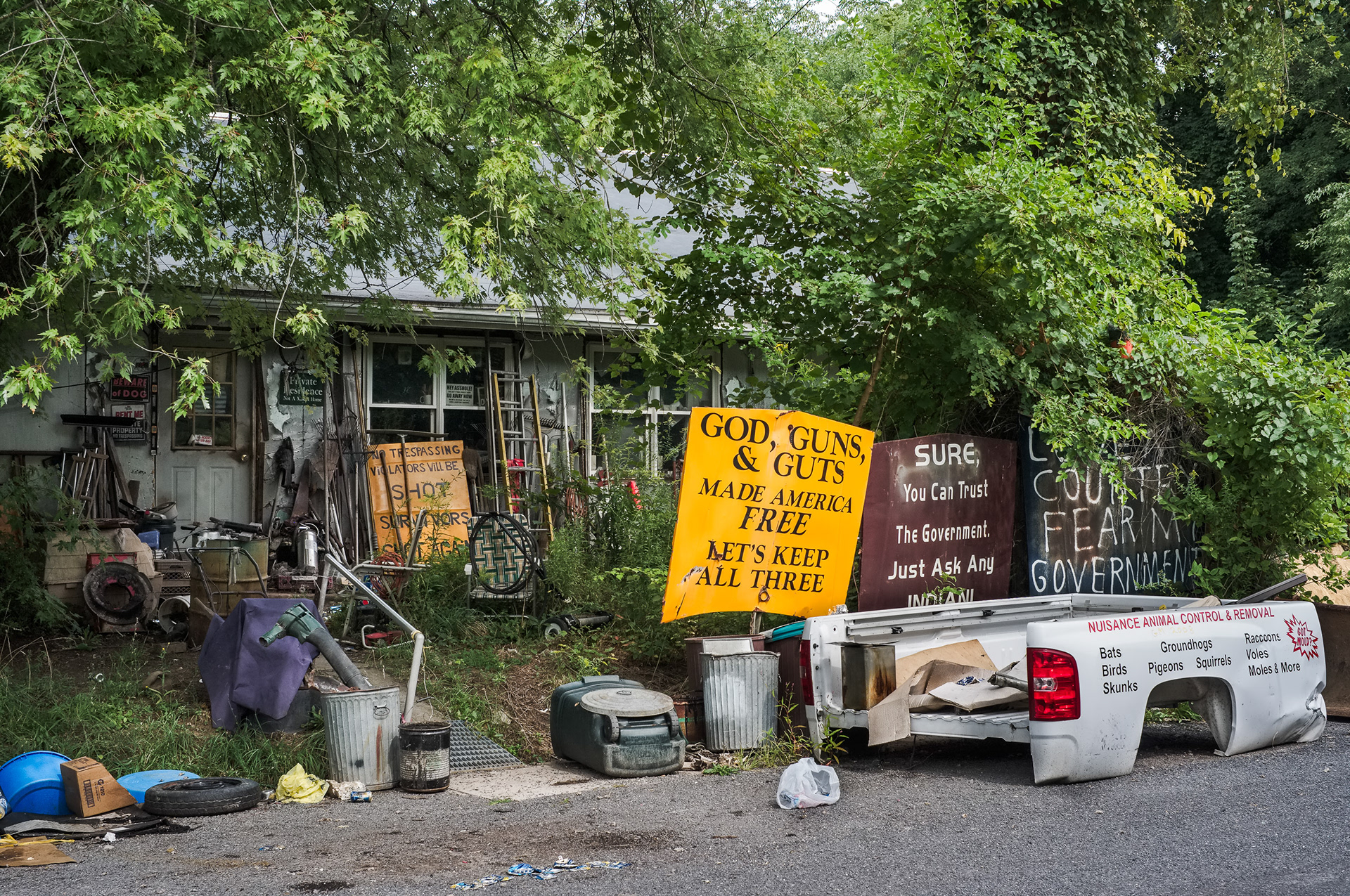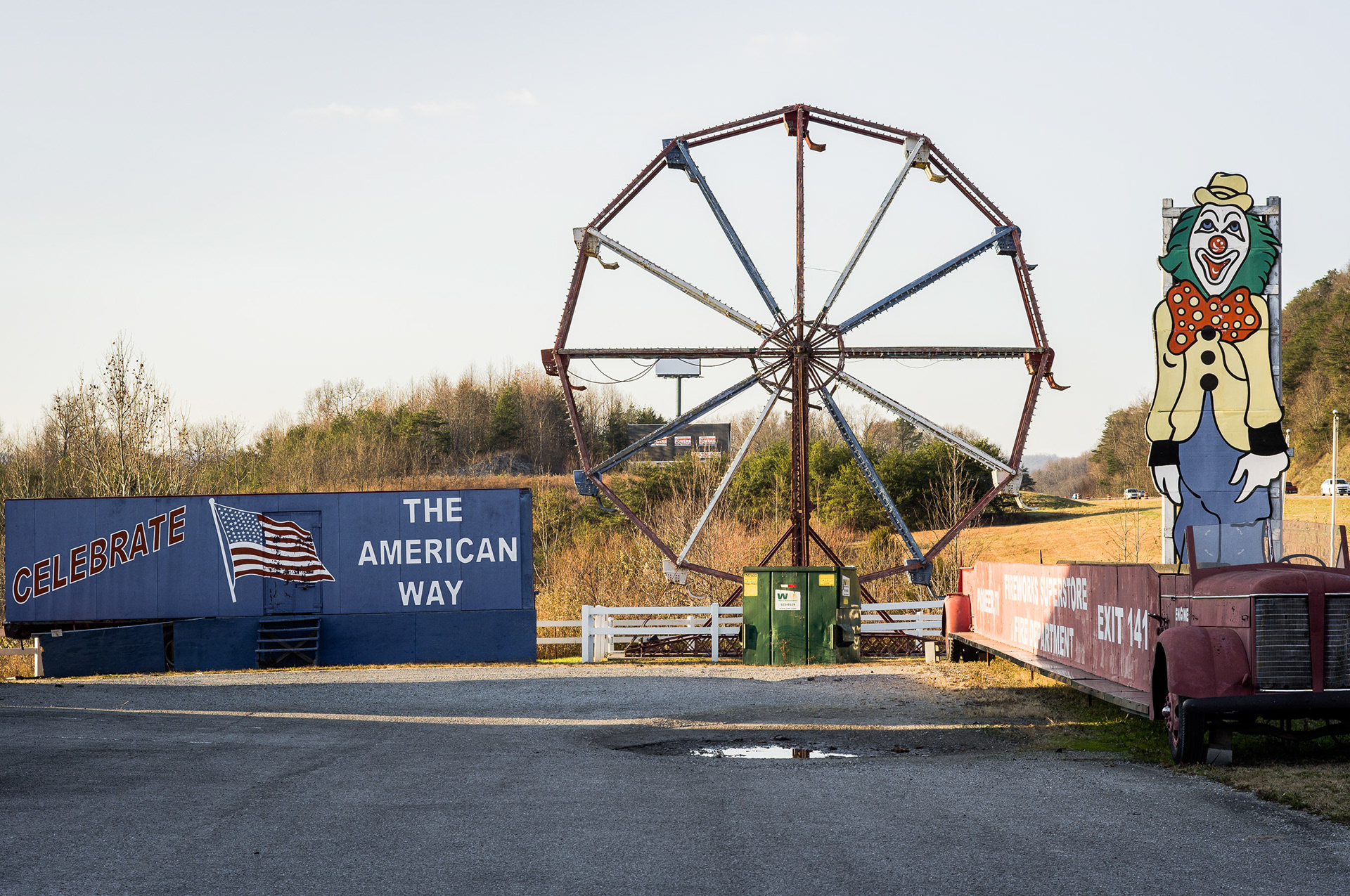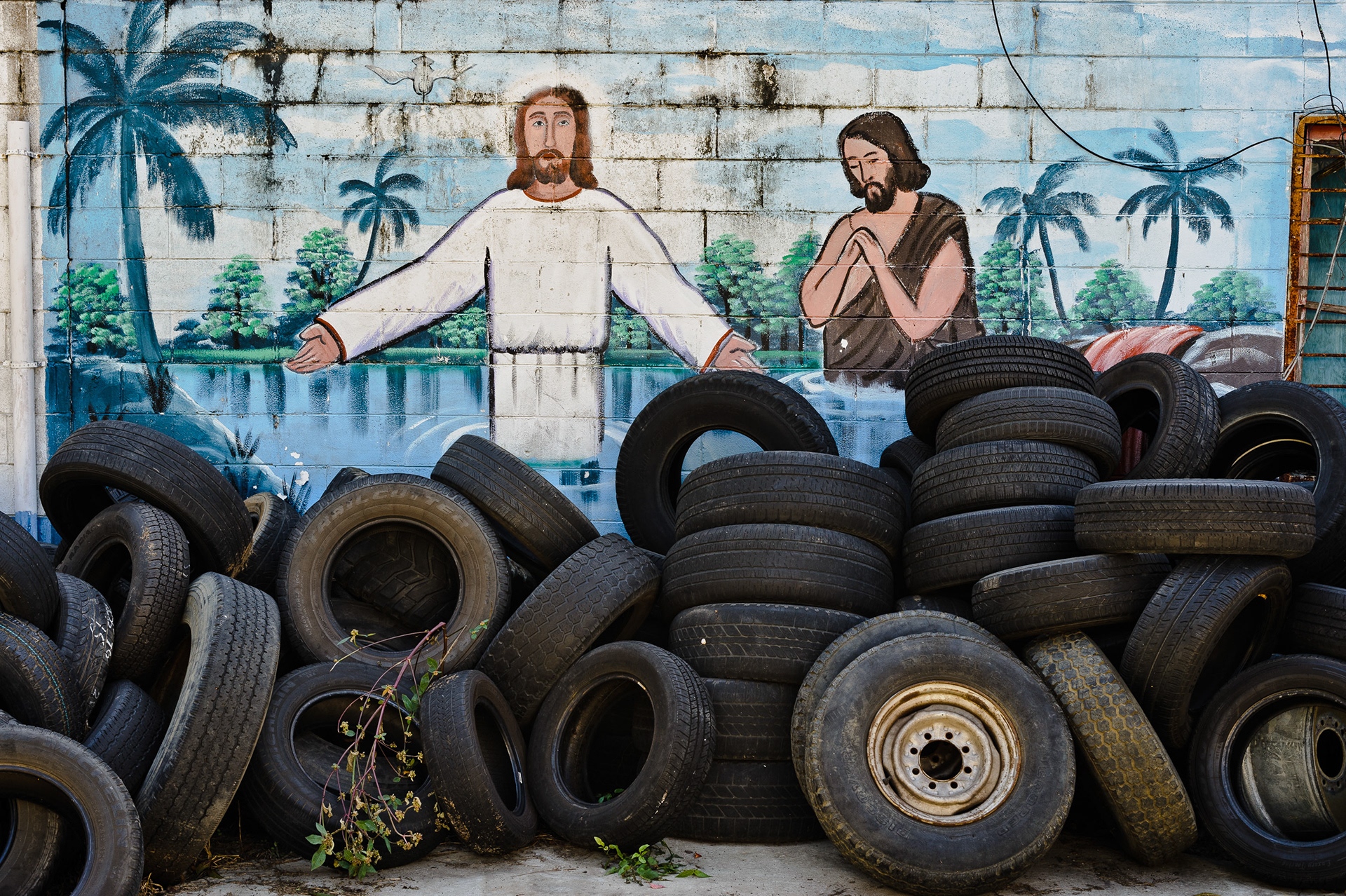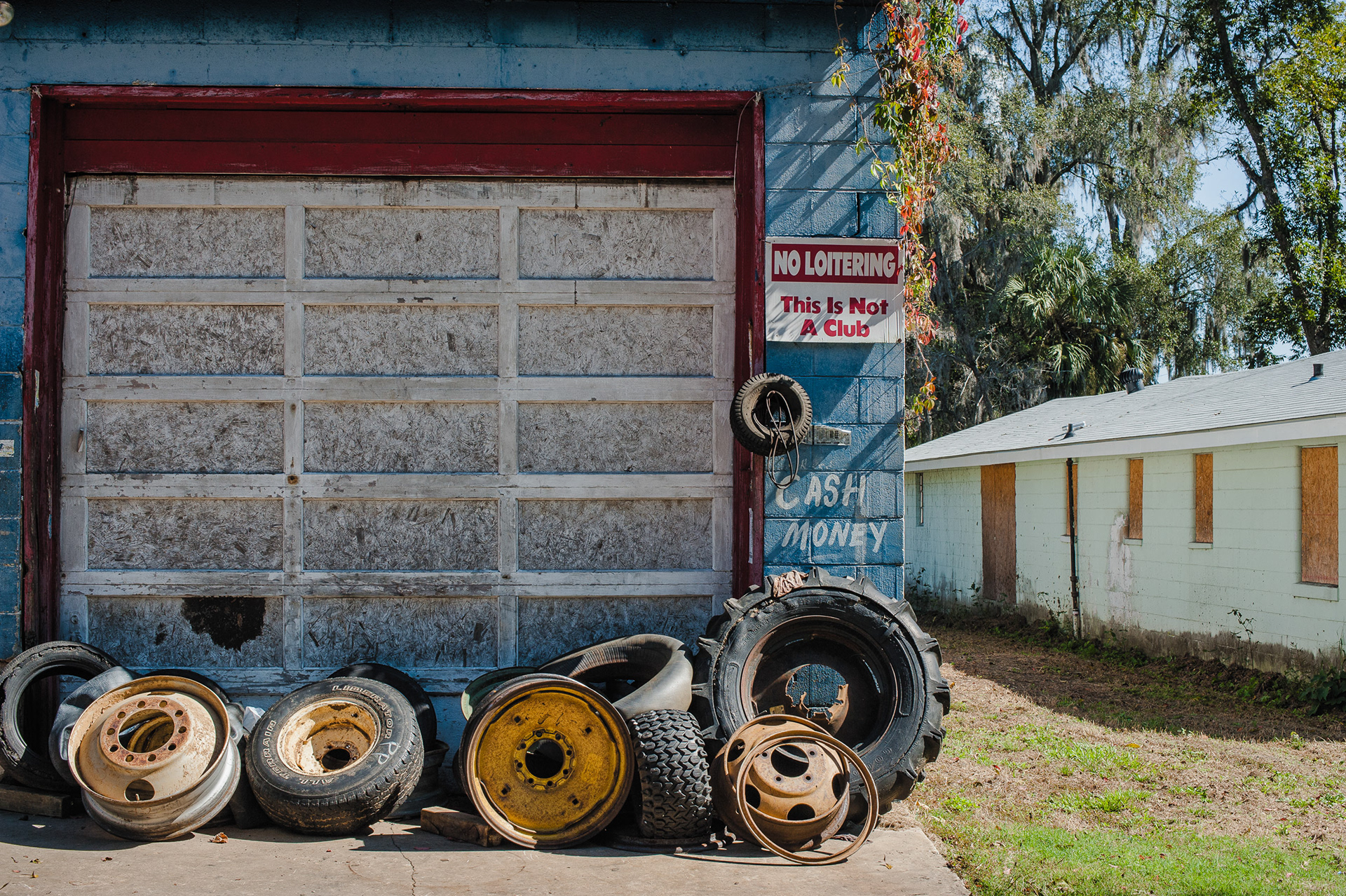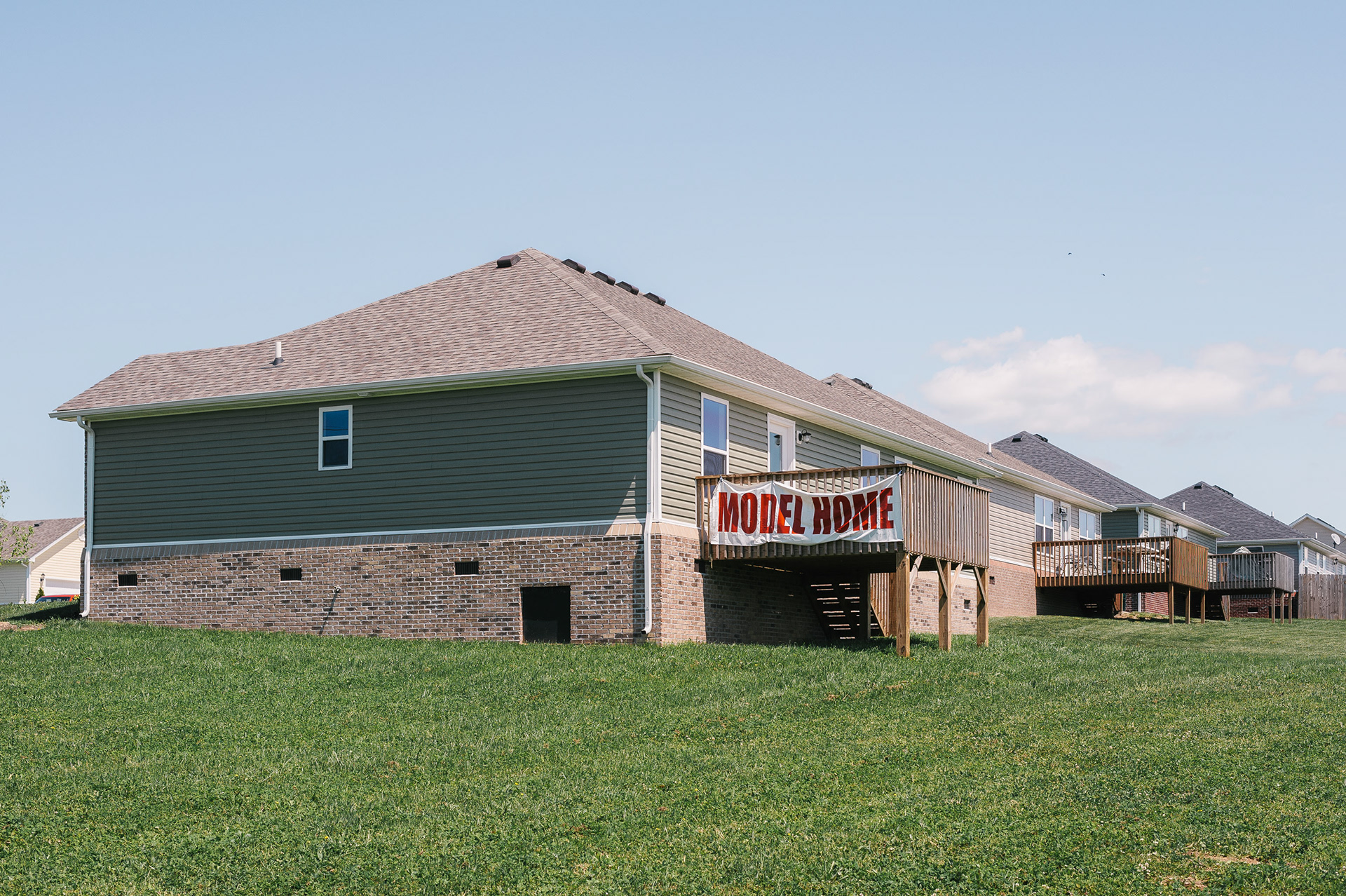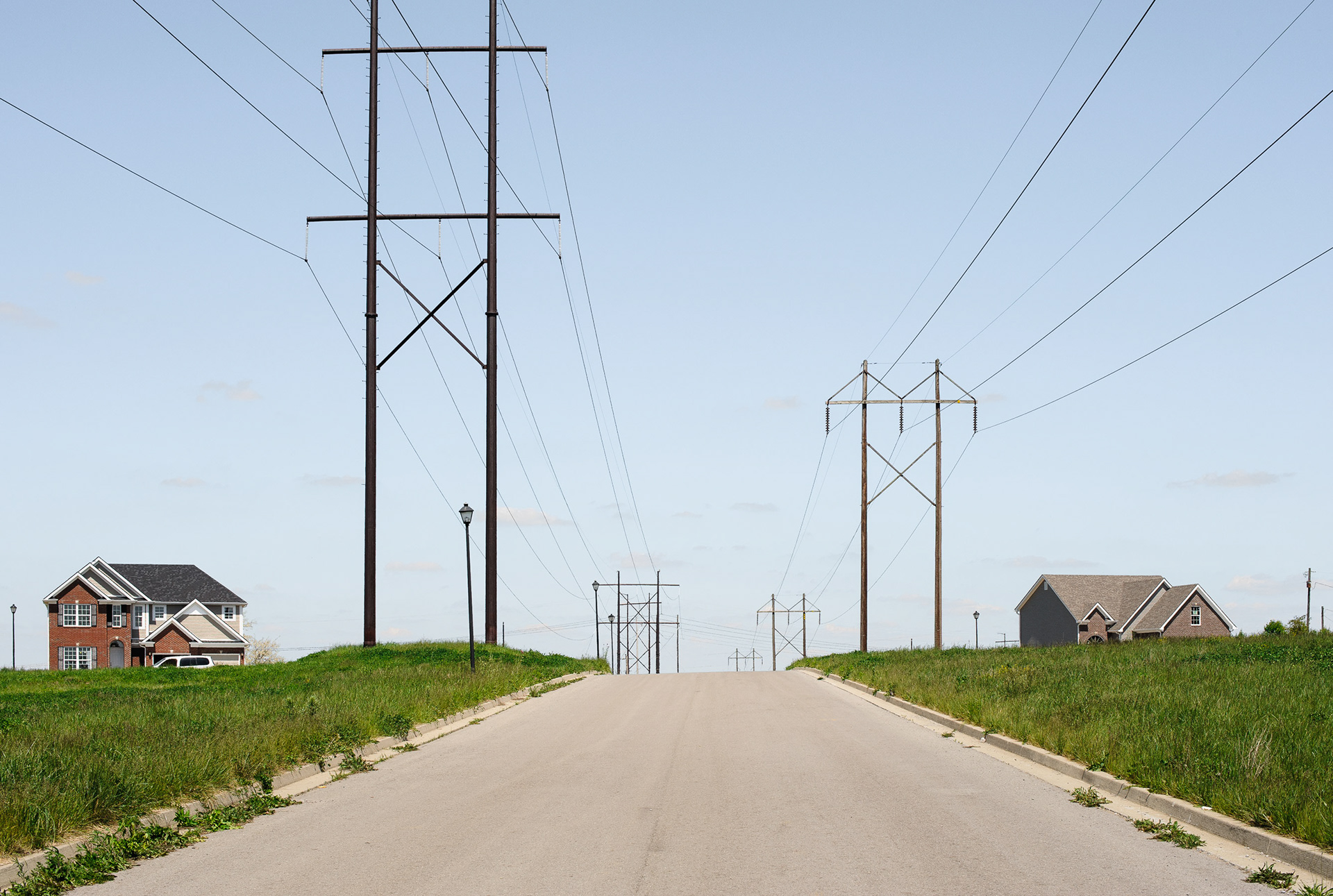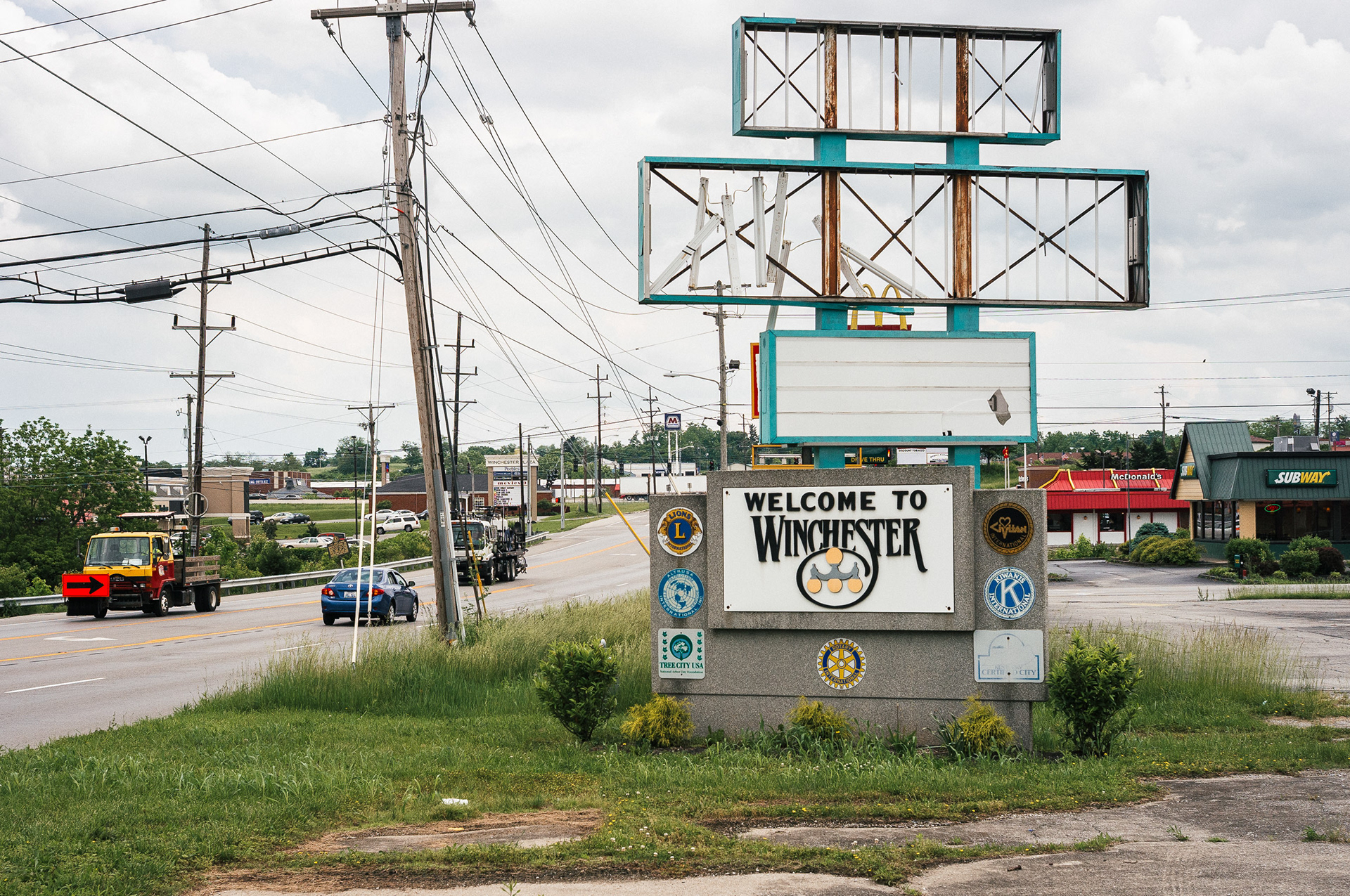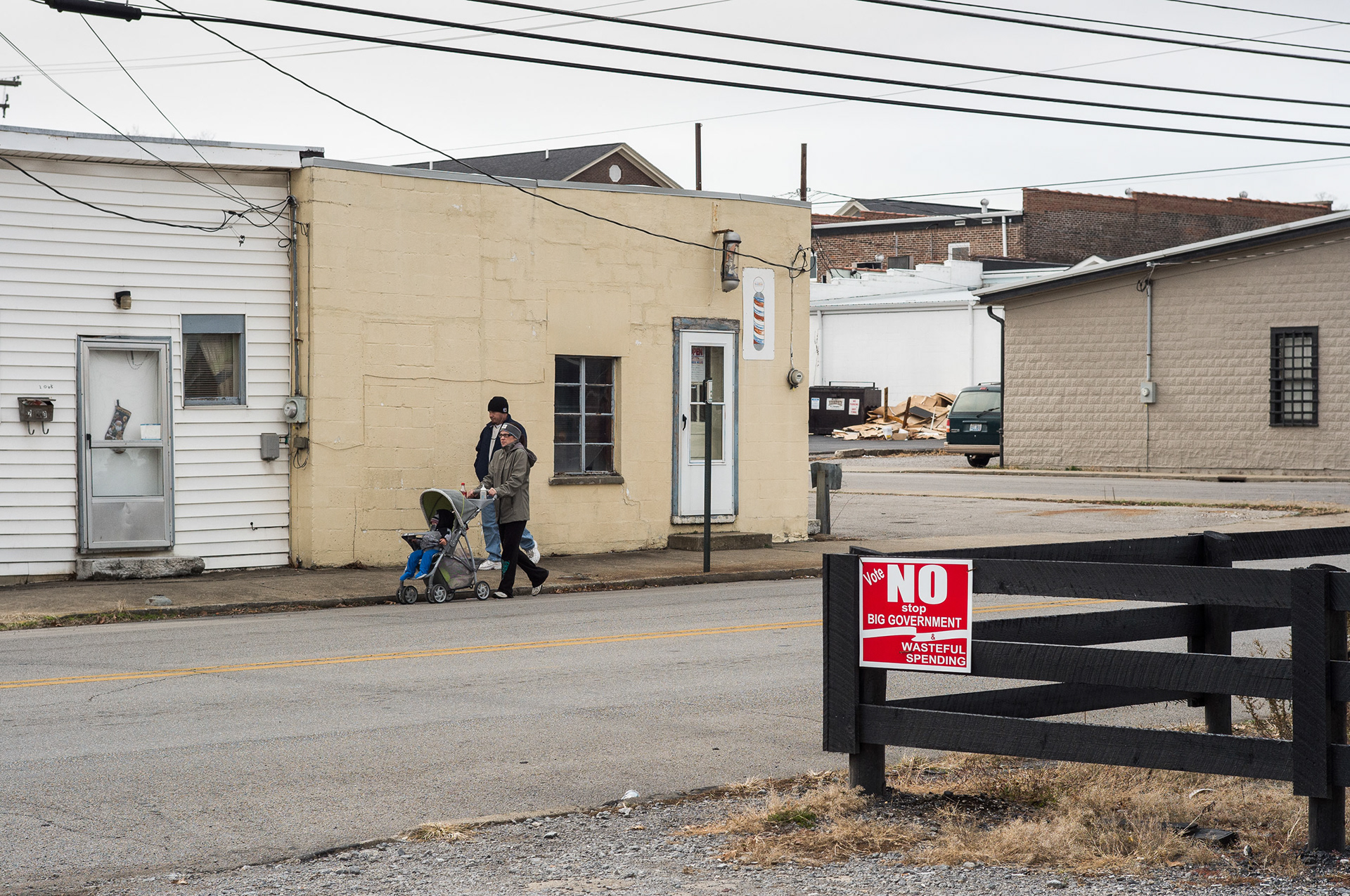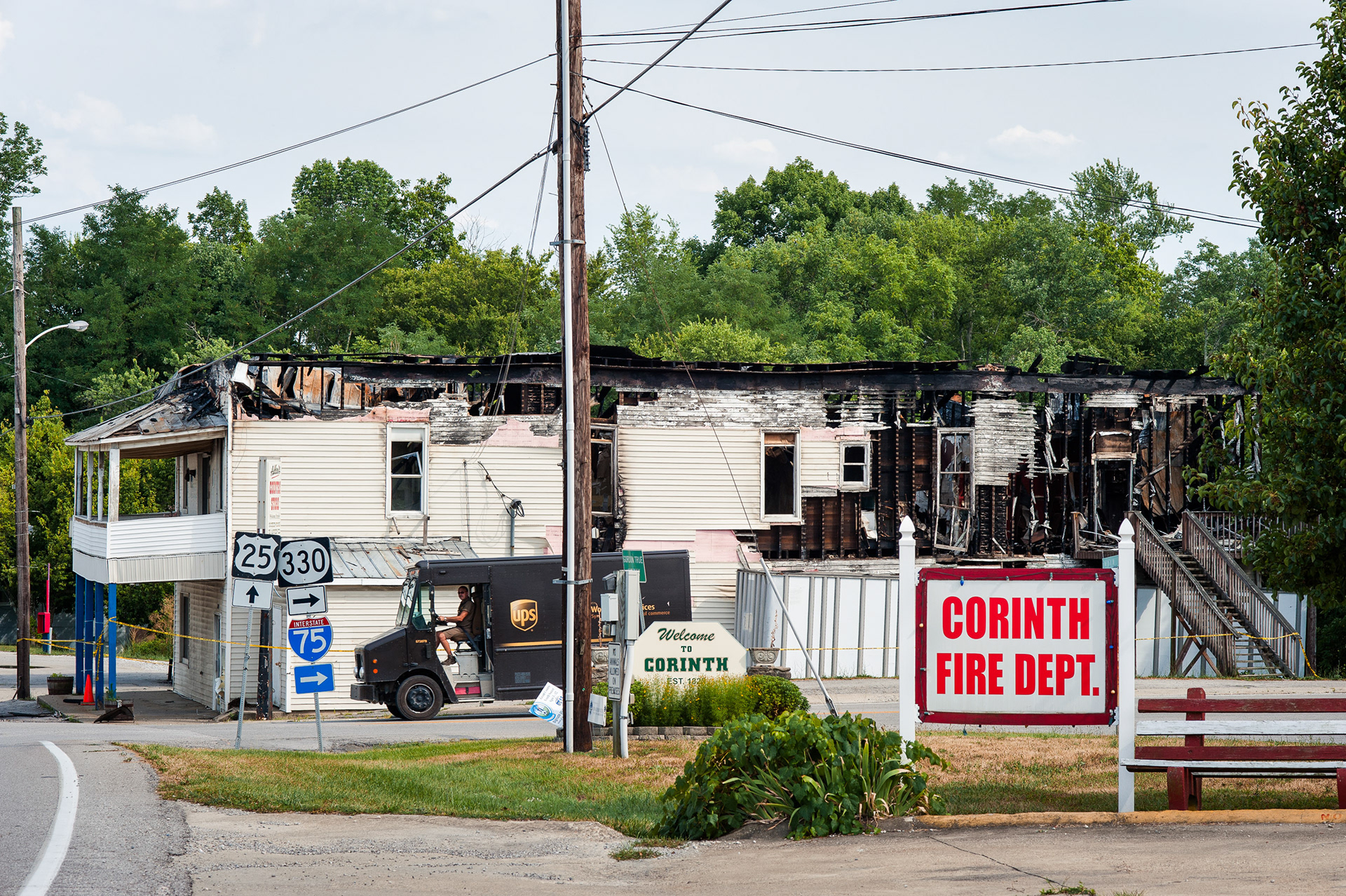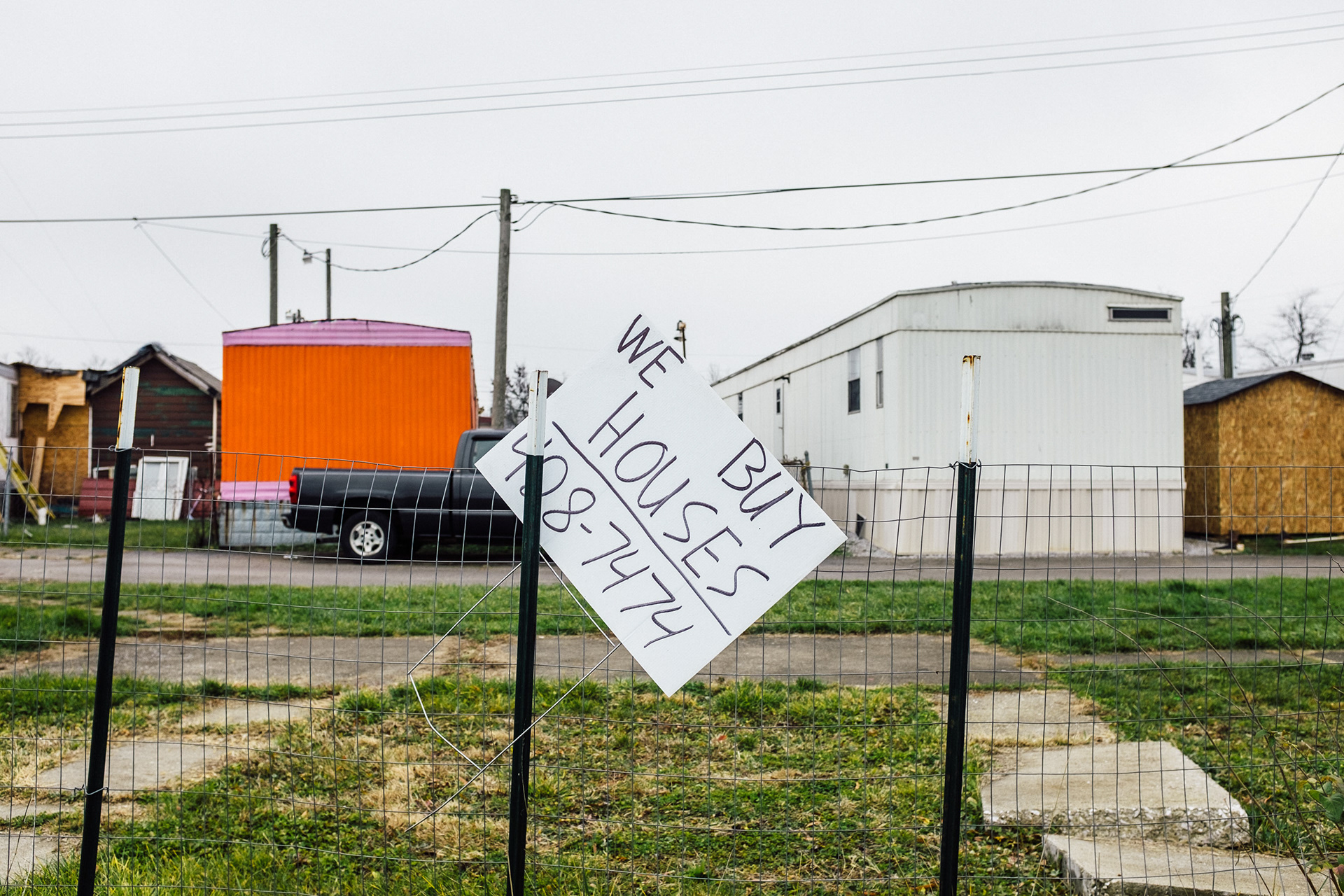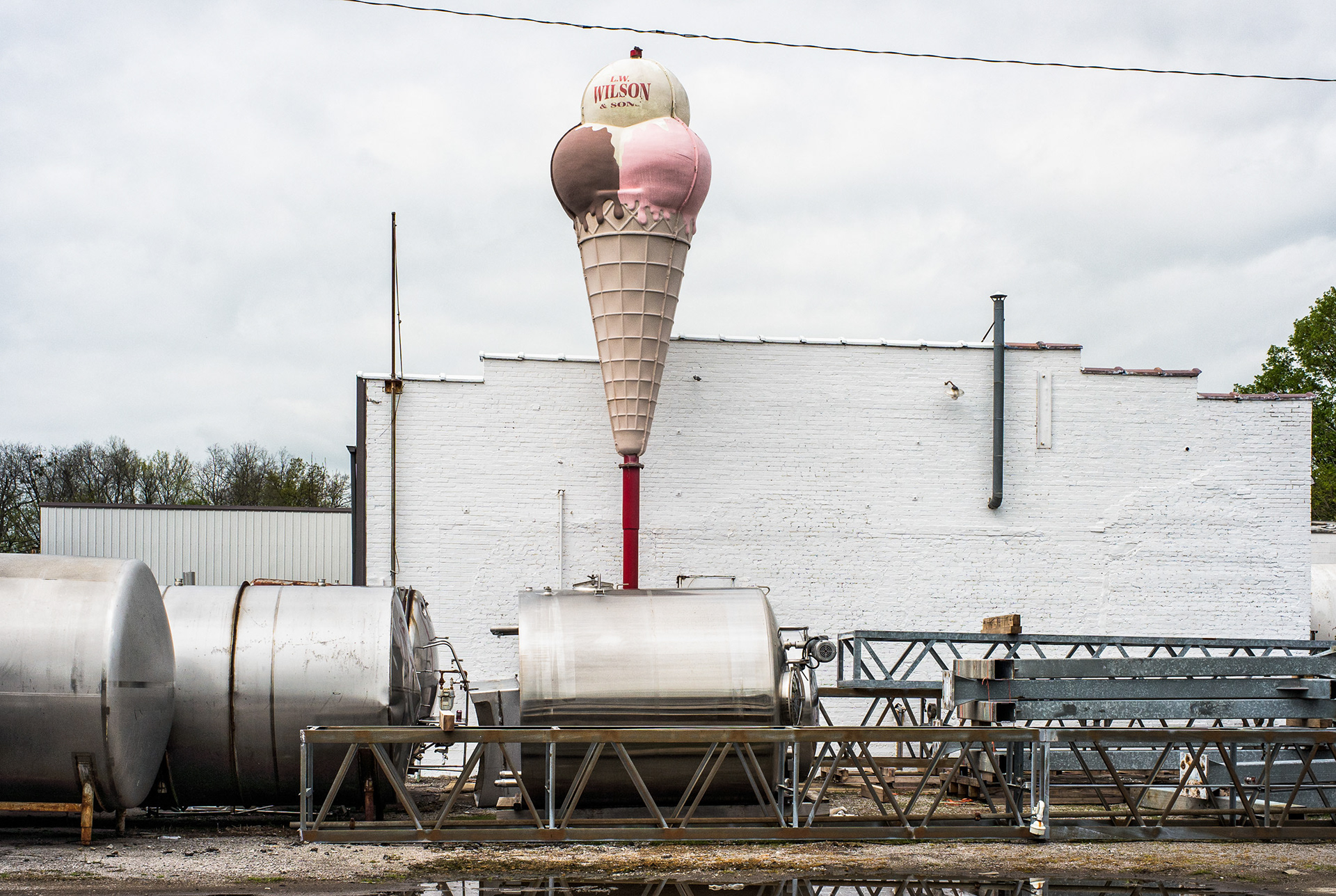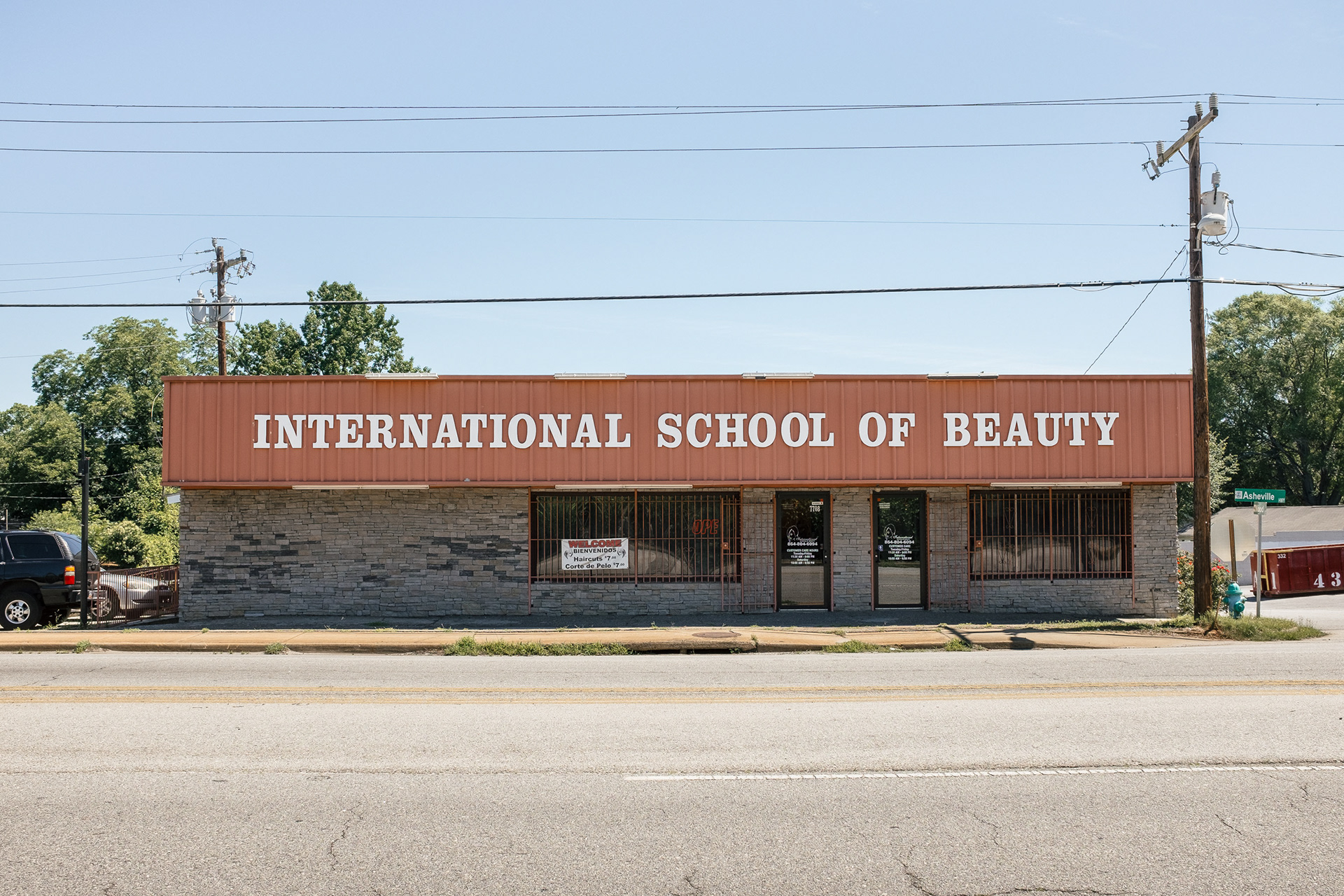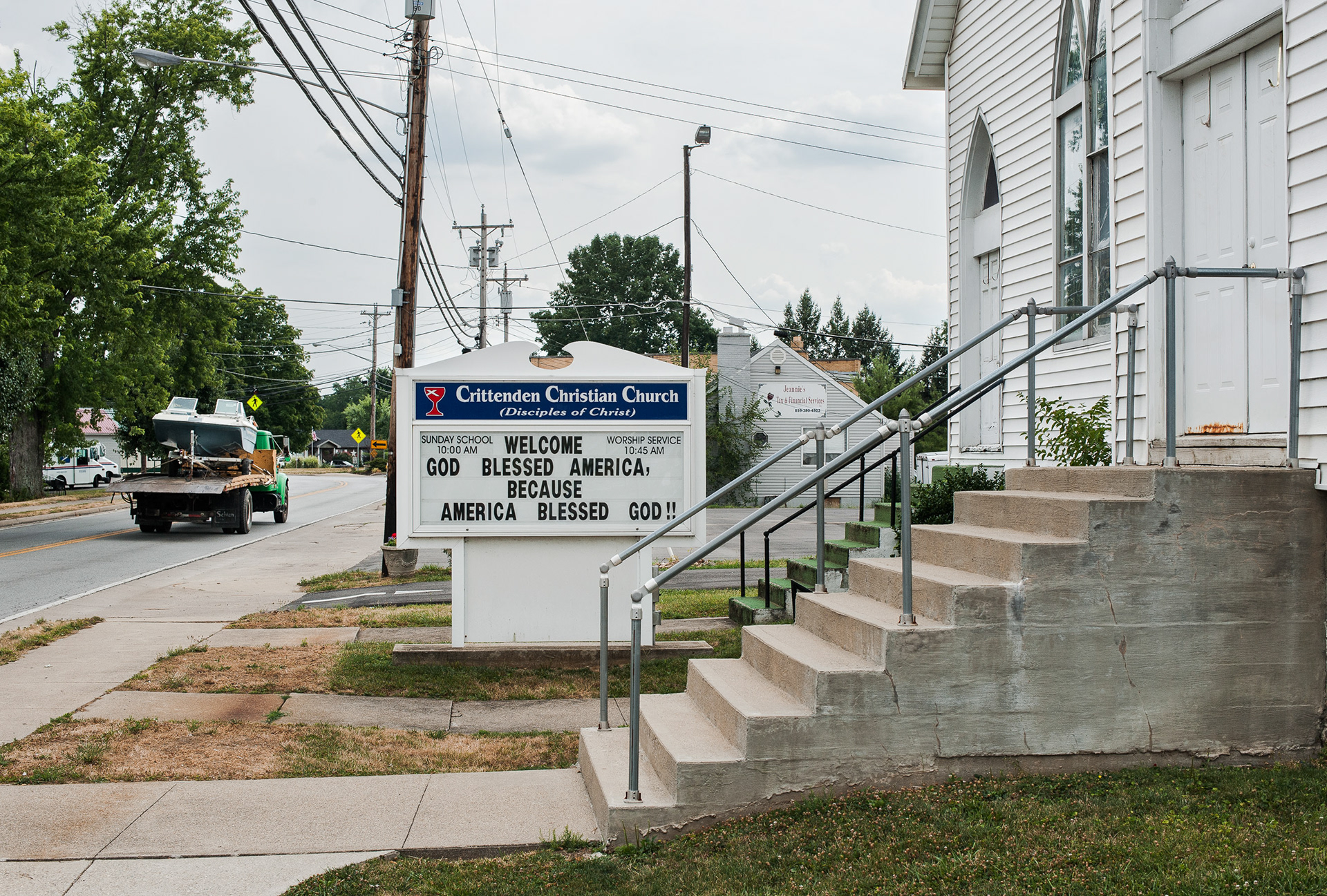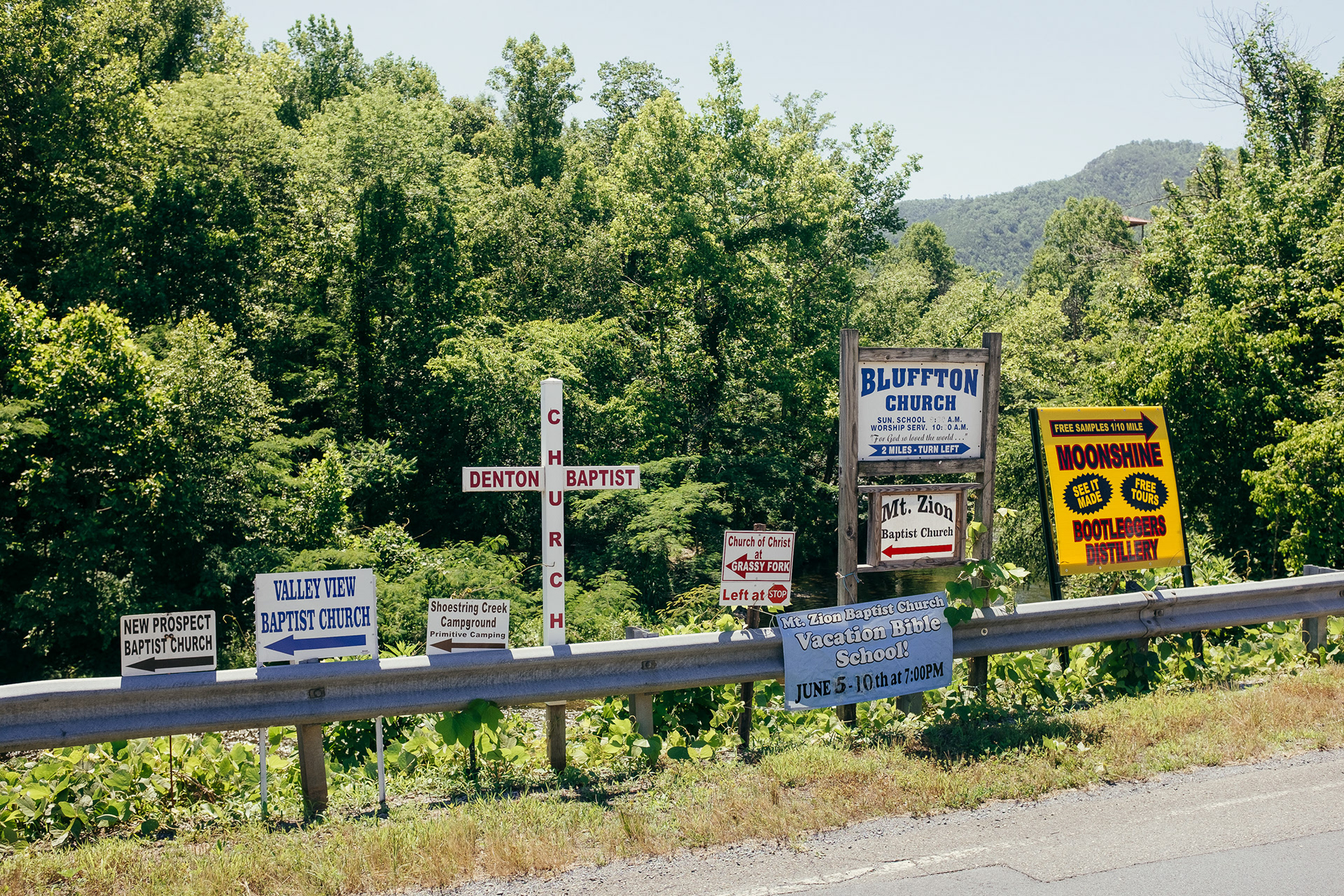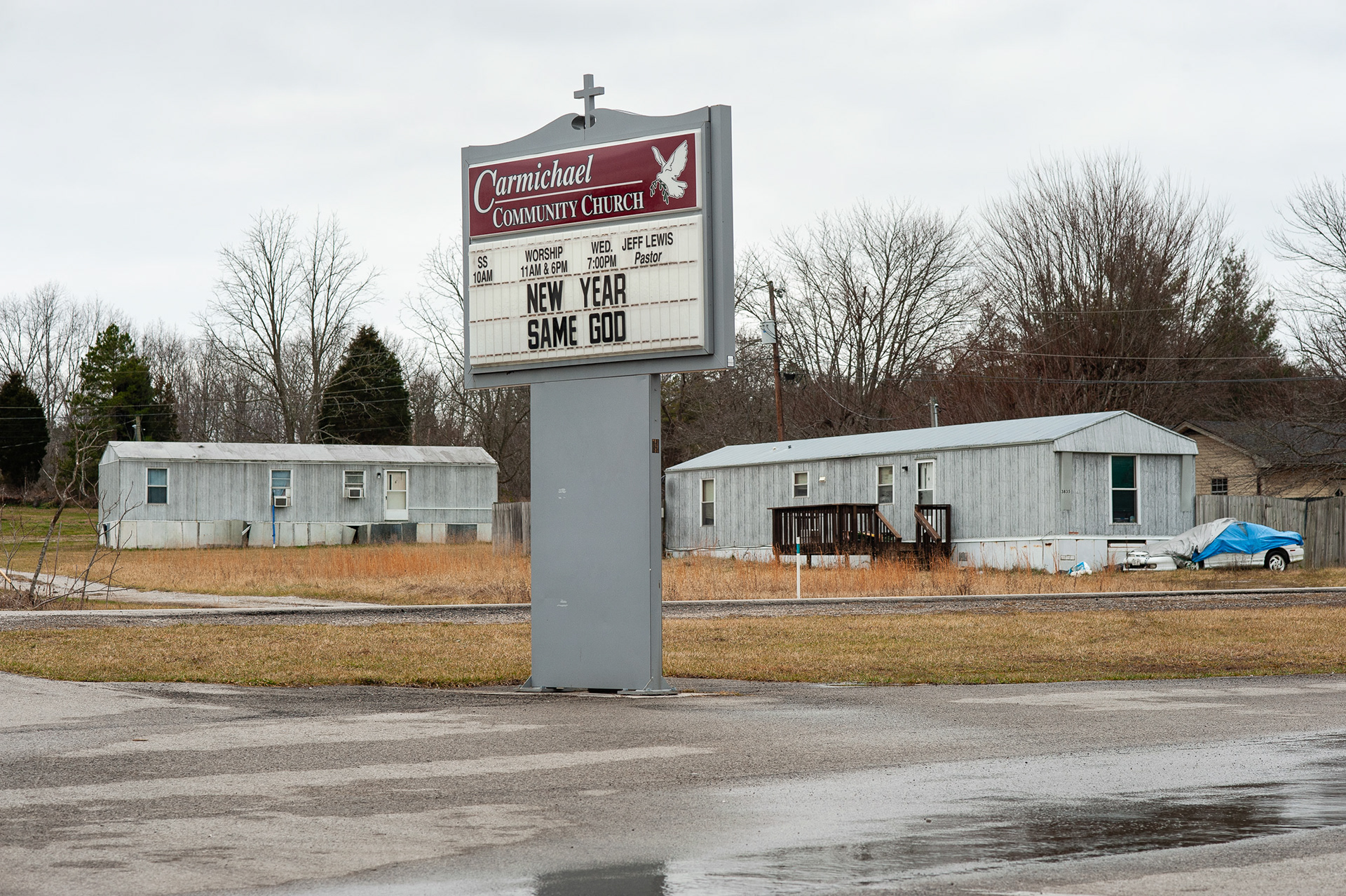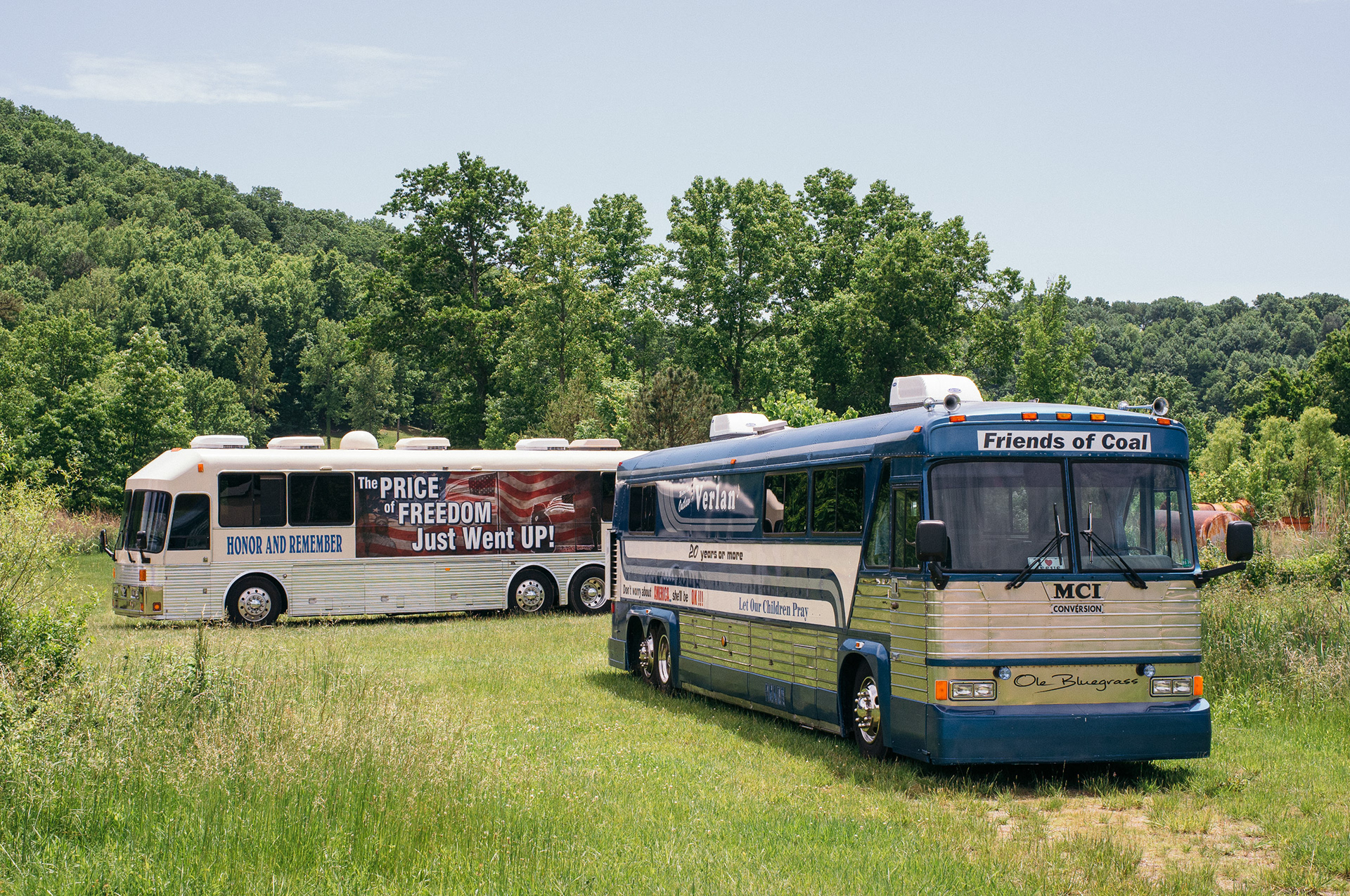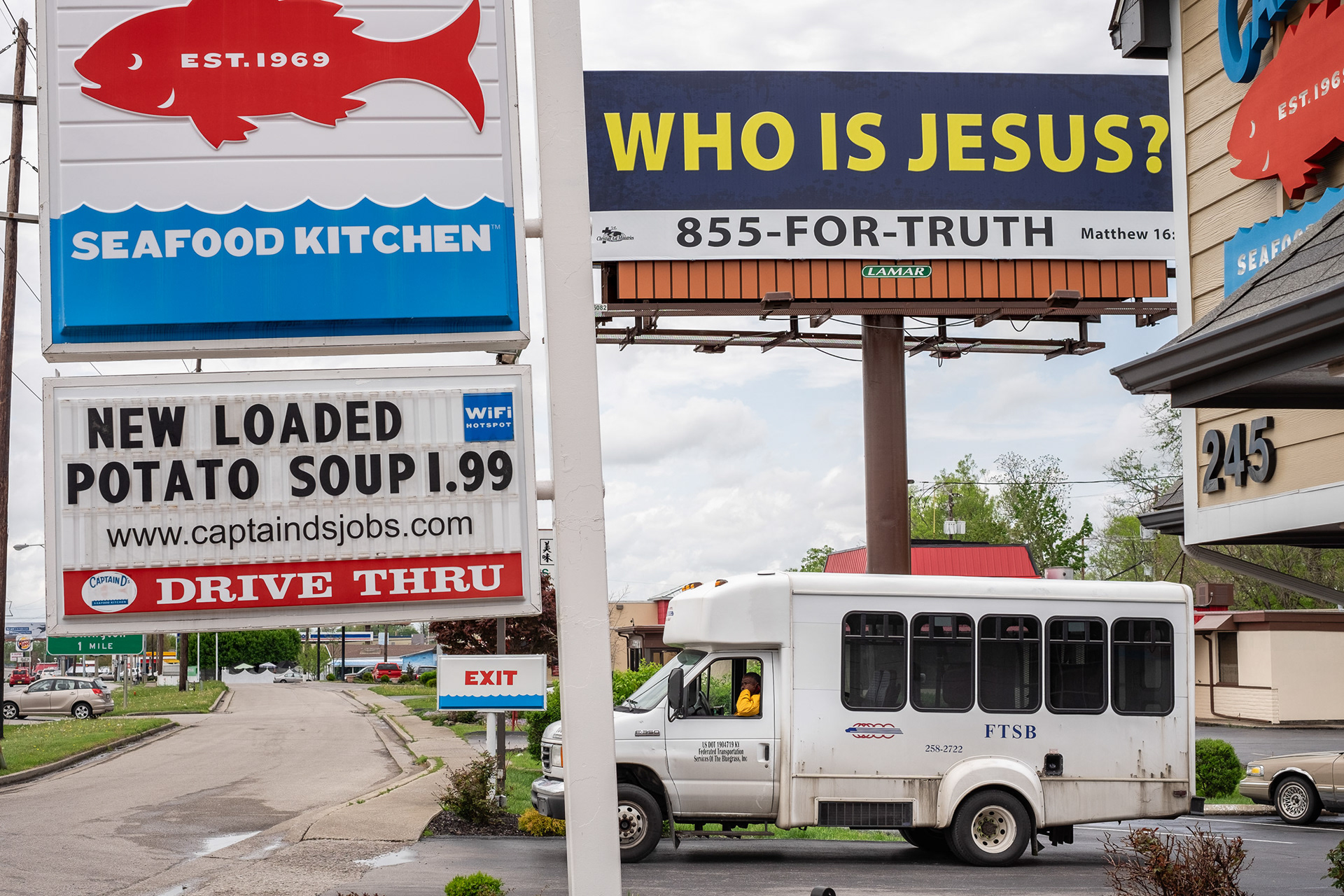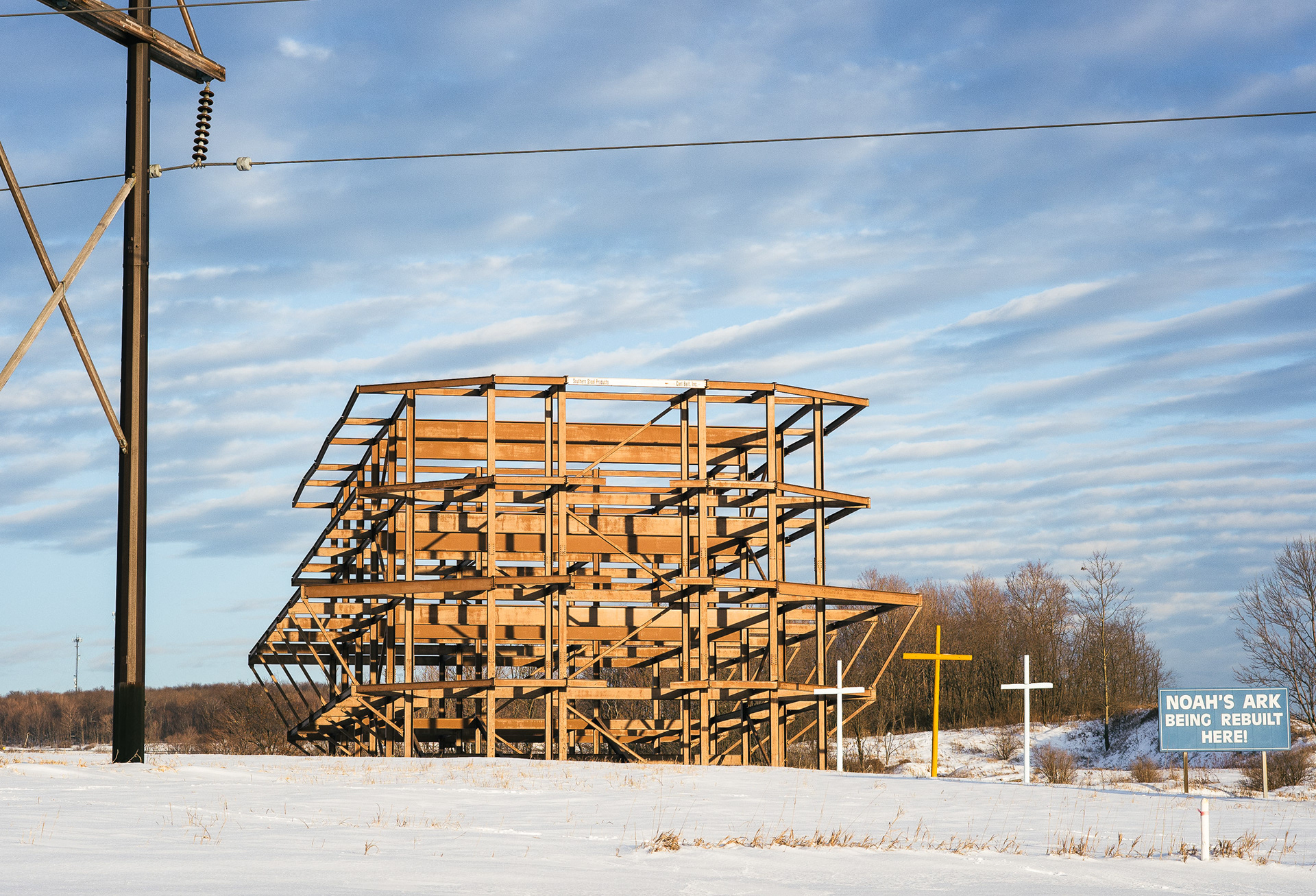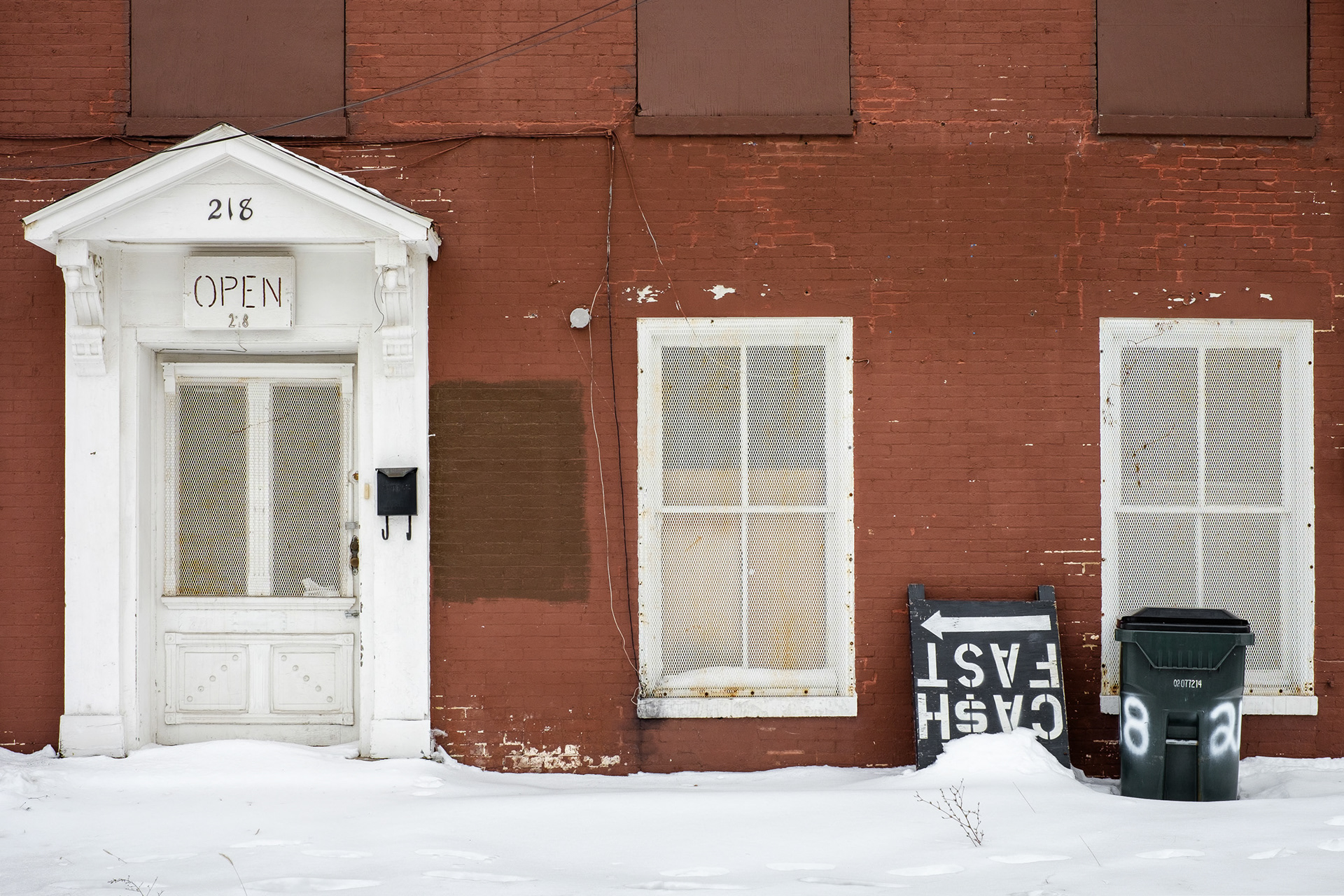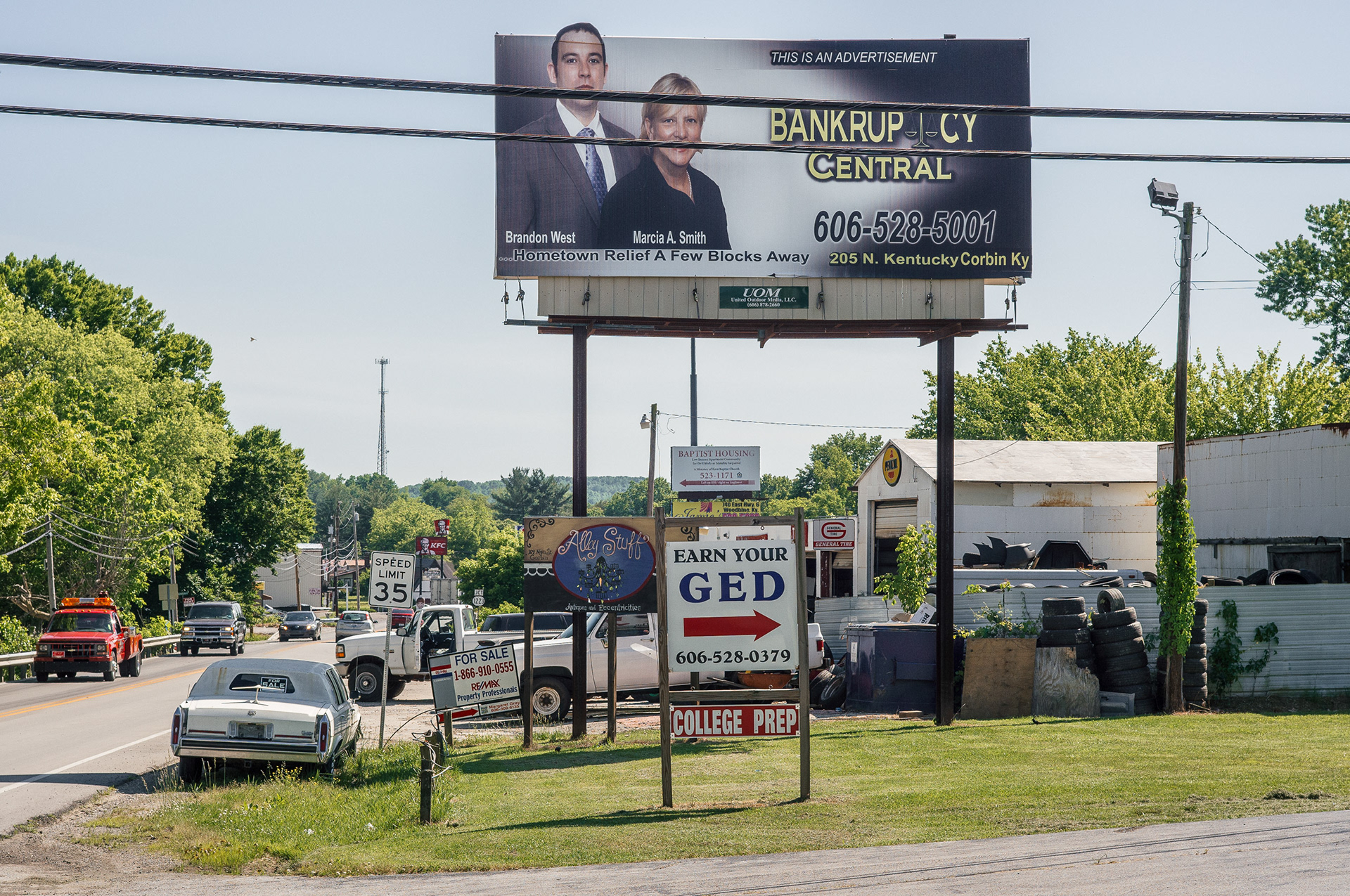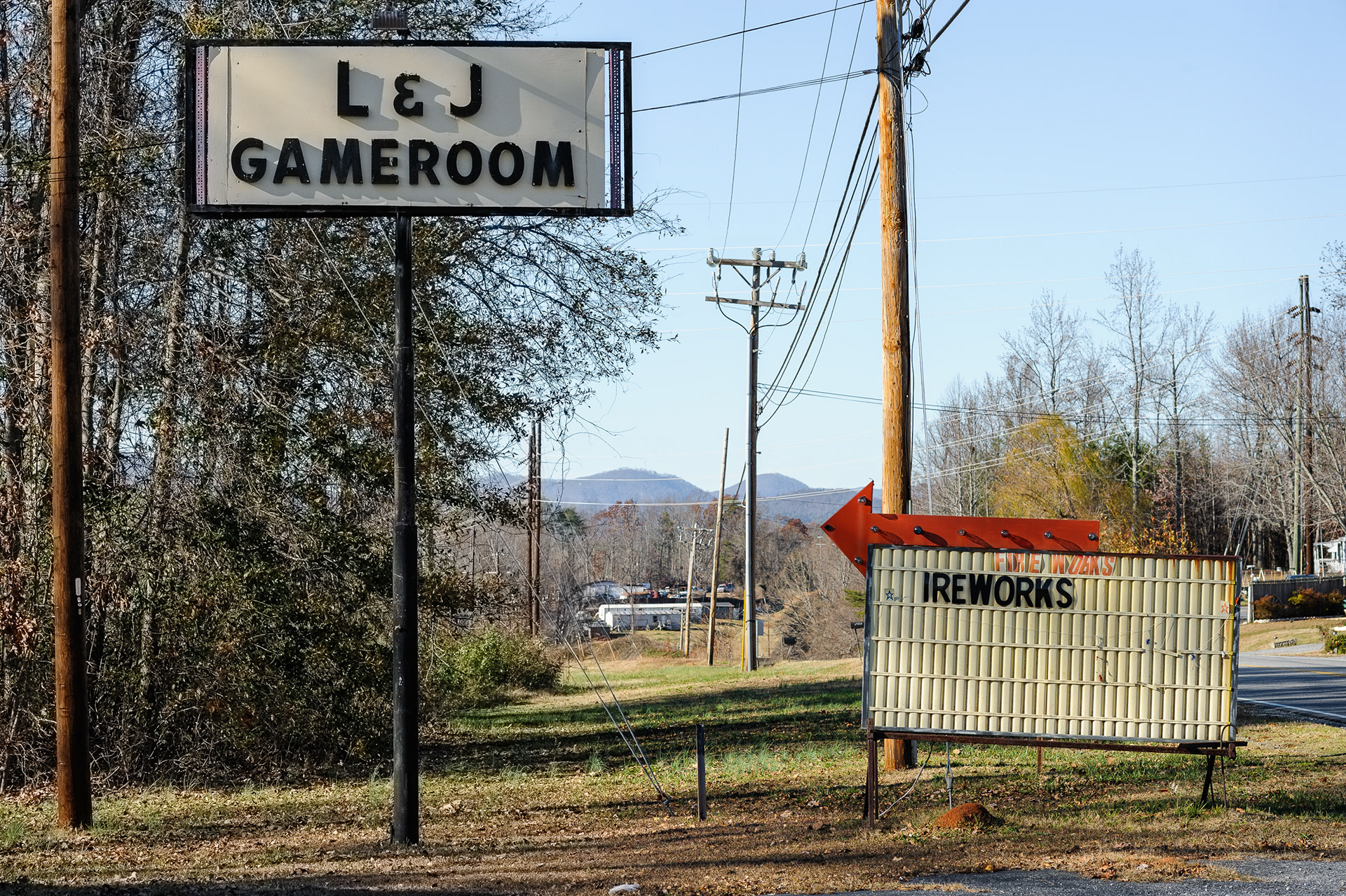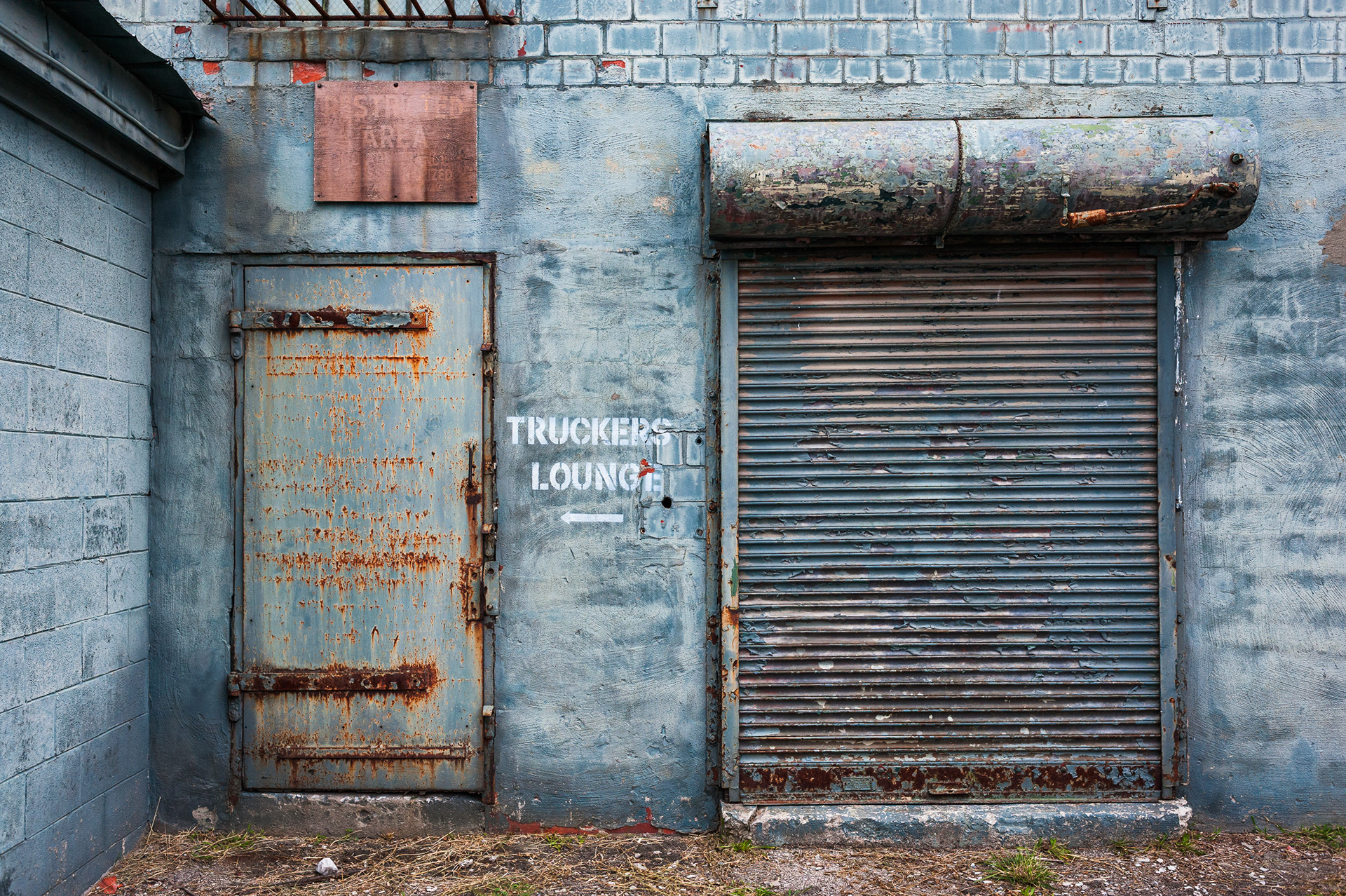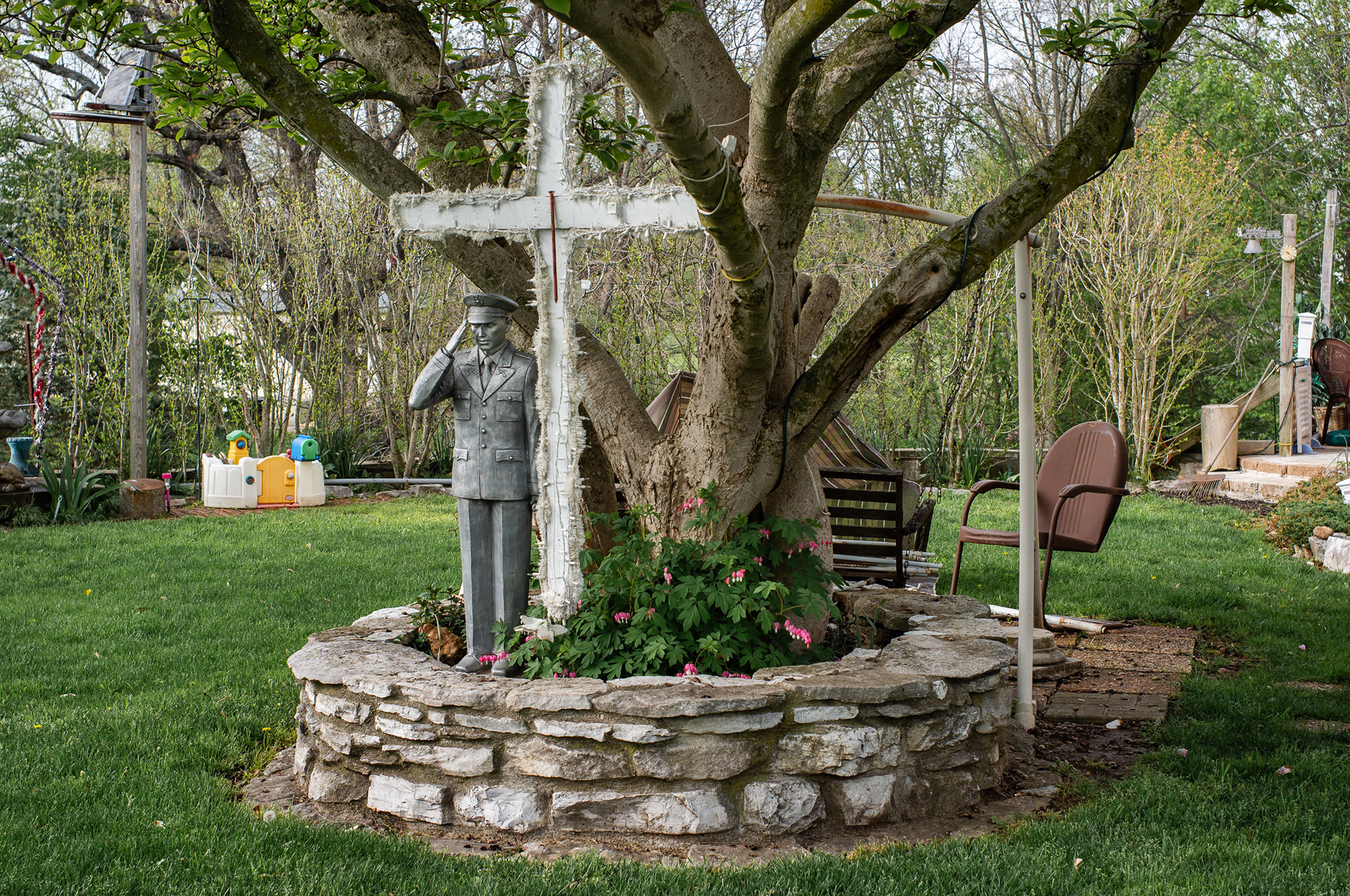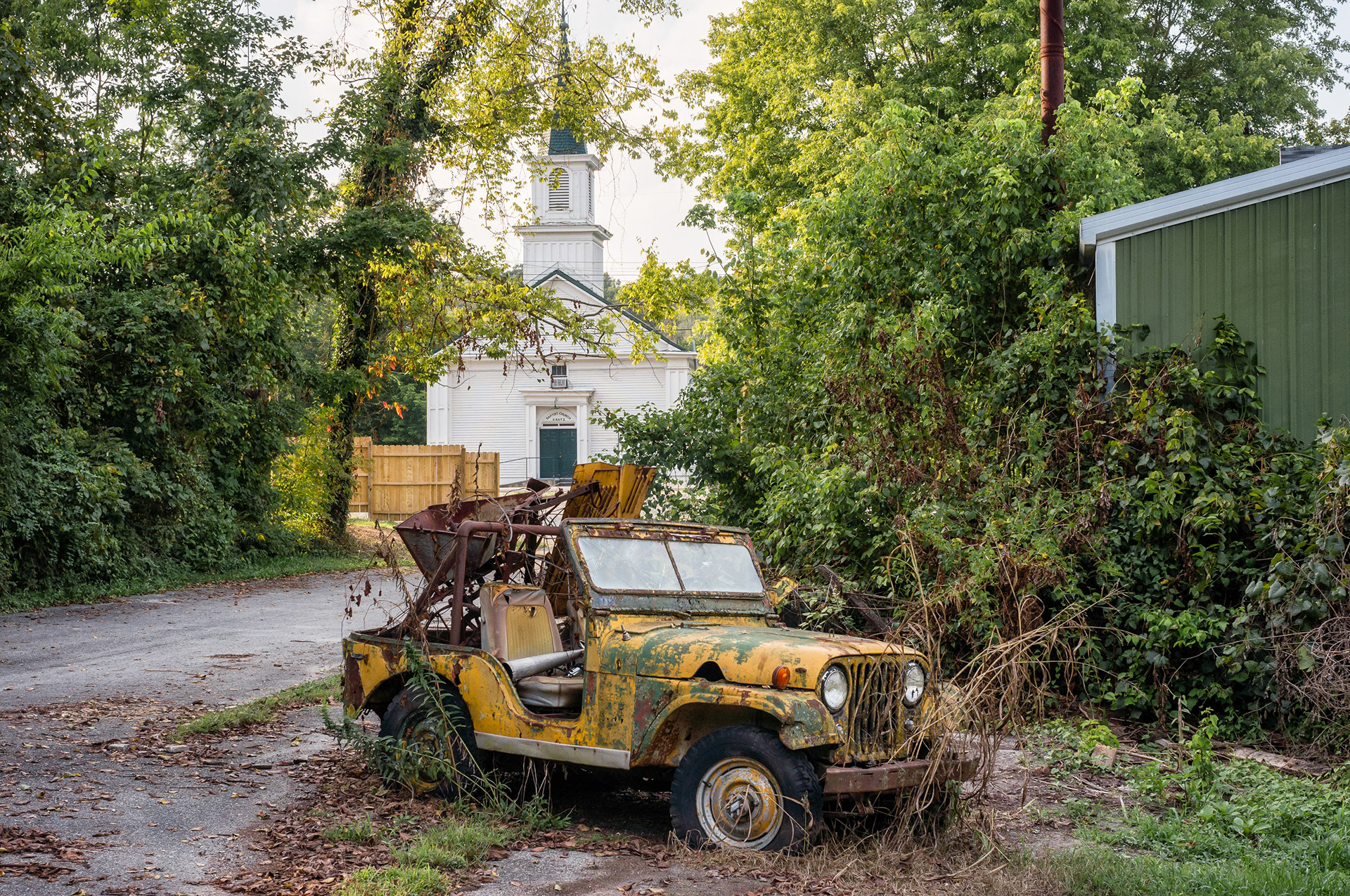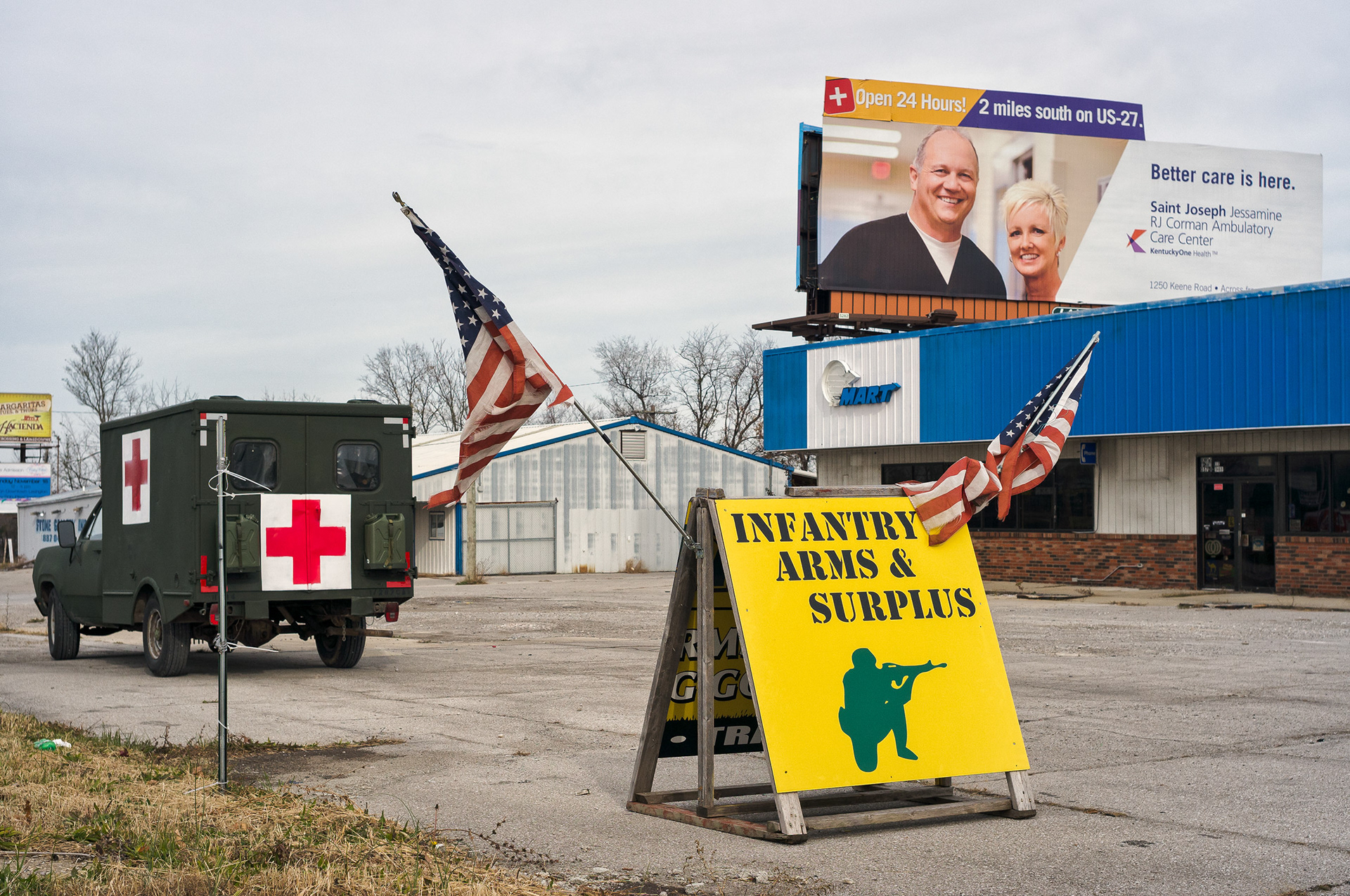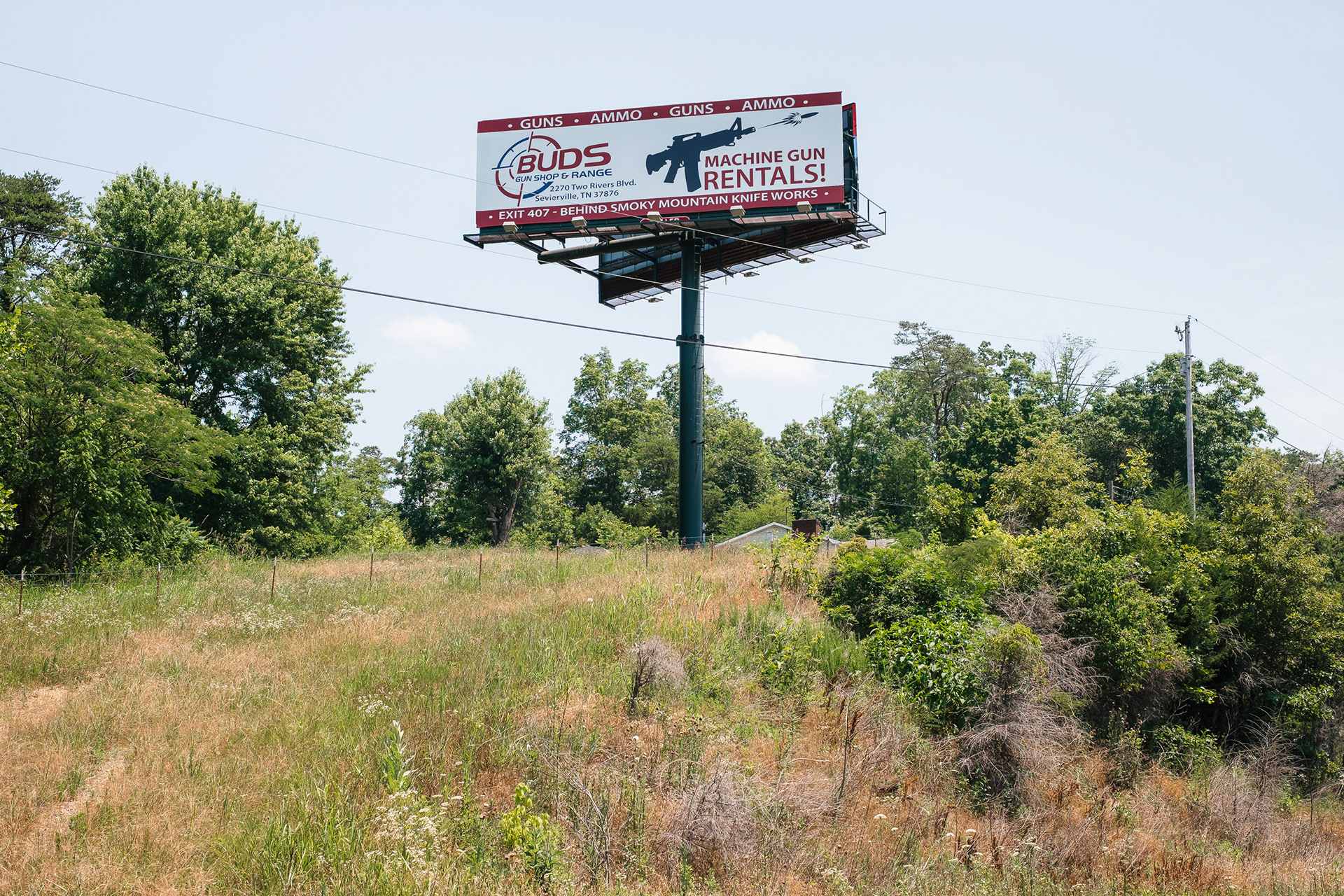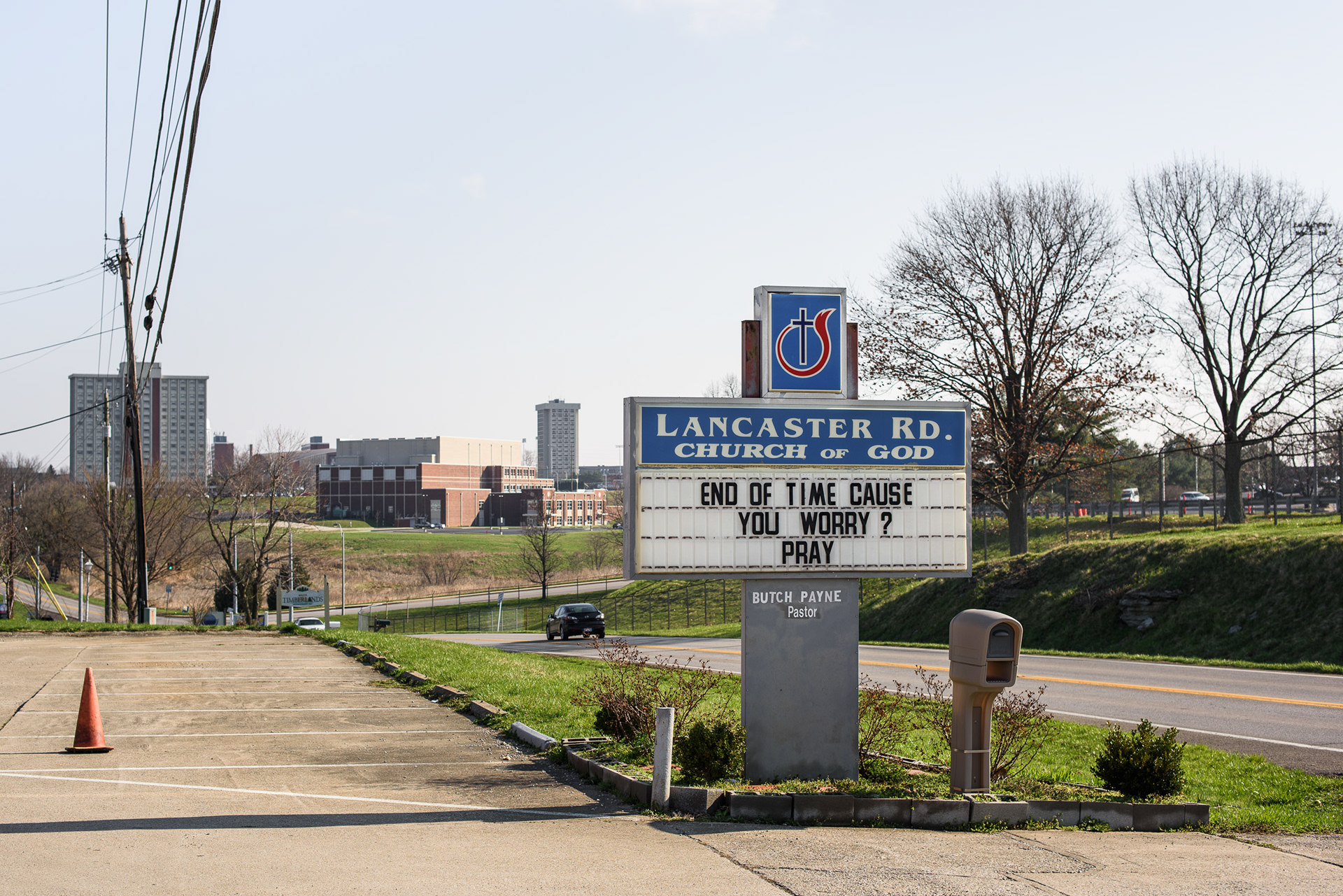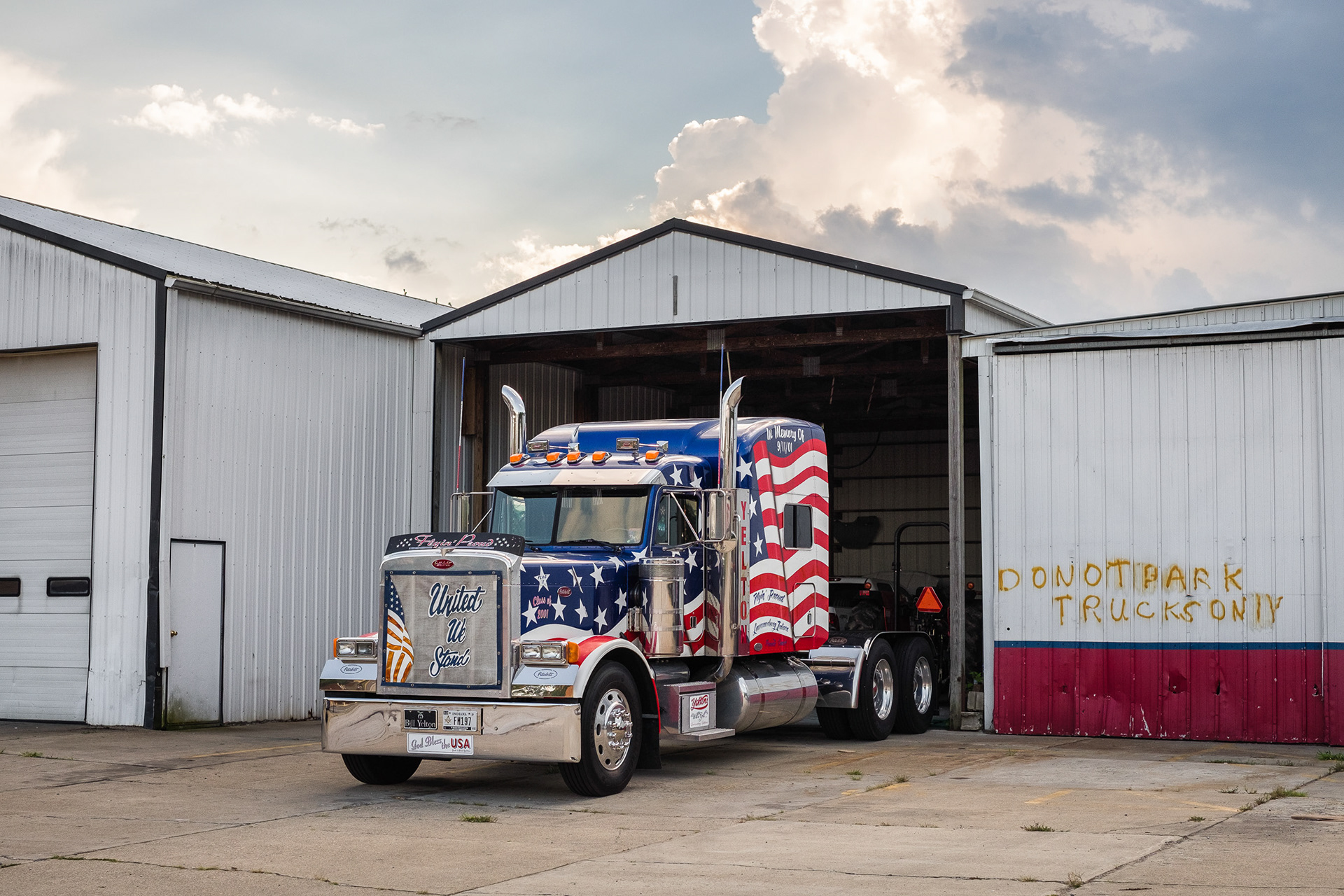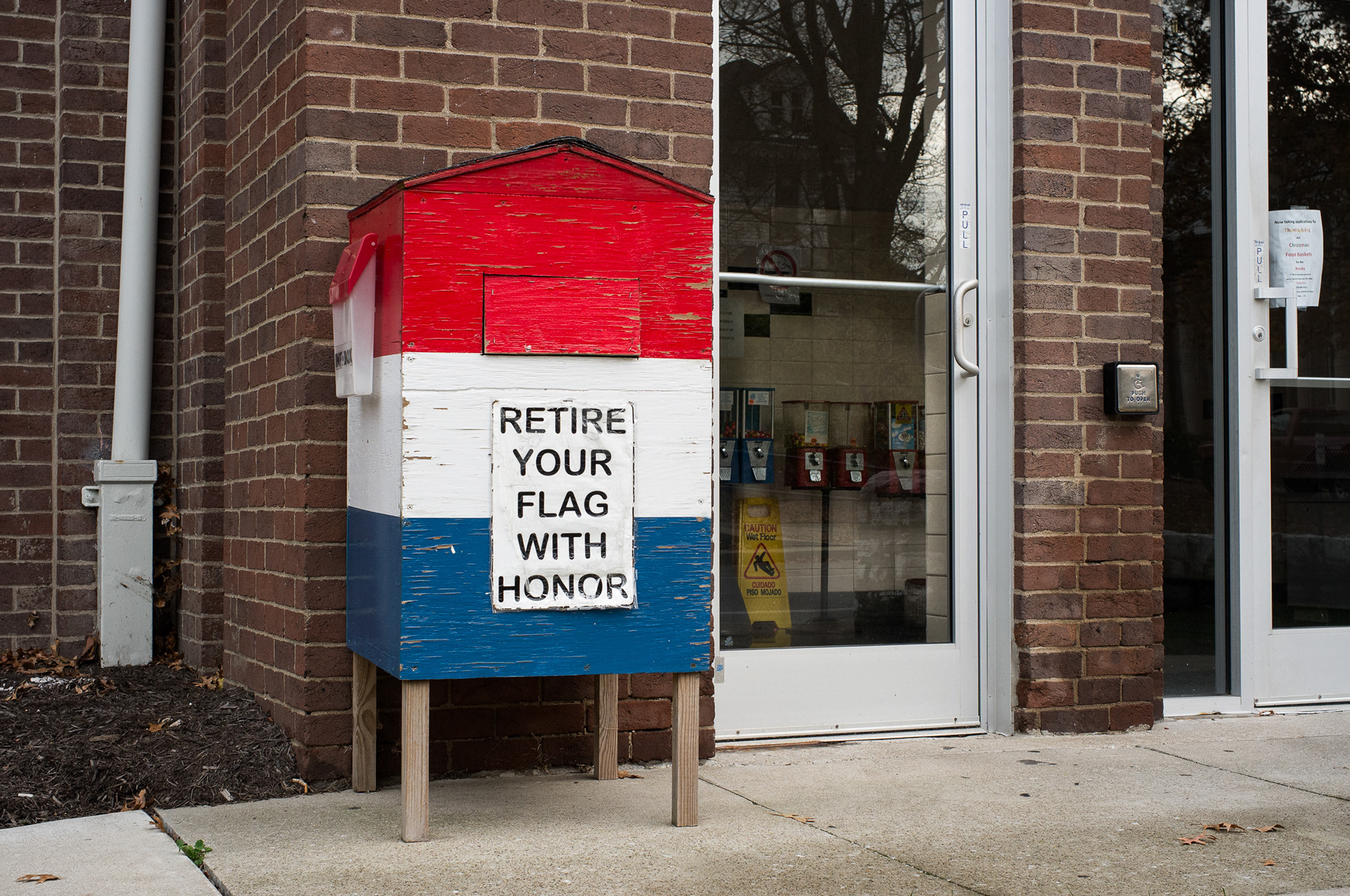In the eight decades since Walker Evans’s automotive excursions into rural and small-town America, so many gifted and less gifted photographers have pointed their cameras at the roadside landscape that one might be excused for thinking that the subject (as well as the viewers) must be exhausted by now. Who, really, needs to take or see more photographs of peeling billboards, gas stations, cheap motels, grain elevators, sagging barns, decomposing truck carcasses, and all the other roadside paraphernalia that have come to epitomize the American way?
And yet, for many photographers, myself sometimes included, the next curiosity by the road exerts an almost irresistible attraction. So can a case be made for yet another entrant into the field of roadside photography?
I think it can. First, by focusing on parts of the country that have been less worked over: not California, not the desert Southwest, not the Great Plains; instead the more intimate and verdant landscape on the western slopes of the Appalachians. Second, by side-stepping the romanticism that has plagued the field (think old-timey diners caressed by the last rays of daylight). Third, by passing up the low hanging fruit: the jokes set up as camera bait by savvy entrepreneurs (think deliberately outrageous signage or giant plastic dinosaurs). Fourth, by reading the roadside landscape as the unscripted expression of contemporary mentalities, different, at least to a degree, from those of past decades and other places. Fifth, by bringing a fresh eye to the odd, sad, or absurdly funny constellations in an environment to which most of us are so habituated that we don't notice anything worth a second look.
Whether the photos live up to these lofty ambitions I leave to the viewer to decide. One thing I think they do accomplish is to shed some sorely needed light on a part of the country that only recently reminded everyone of its very existence. What burst forth onto the national political stage in 2016 without apparent warning has been stewing here for a long time, its ingredients visible to anyone who cared to look.
Few people show up in the images. This is less a deliberate choice on my part than a reflection of the sights that make me hit the brakes. There are people inside cars and trucks everywhere, to be sure, even on the remotest country lane. But they tend to remain inside and incommunicado. The few pedestrians I do encounter prefer—out of politeness, shyness, or suspicion—to steer clear of the frame. If the images tell nonetheless of people, it is through traces of their activities. The images are, hopefully, a bit like artifacts from an archaeological dig, which hold intriguing insights into the culture that left them behind but may raise more questions than they answer.
It is the alien's privilege to see aspects of American life in sharper relief than they appear to the better adjusted native. This privilege comes with a deeply felt obligation to report back favorably. Poking fun instead would seem to be a most ungrateful betrayal of trust and hospitality. As a born German, I don’t want to be ungrateful to my adoptive country. But as a “naturalized” U.S. citizen, I feel that thirty-odd years of living here, mowing my lawn, and paying my dues have earned me the native privilege to skewer the place with impunity. The “greatest country in the history of mankind”, in the words of my immigration judge, can surely take it. What worries me, of course, is that my irreverent look at how the American way plays out in the hinterland may tick off some members of the audience. All I can say in my defense is that I didn’t make up anything. It’s all out there in its strange beauty. And lest the gentle foreign visitor to this site feel egged on to mount his or her favorite anti-American high-culture horse, let me say that I am finding plenty of material for similar projects in Germany and Norway.
The photographs below represent but a sliver of the project.
